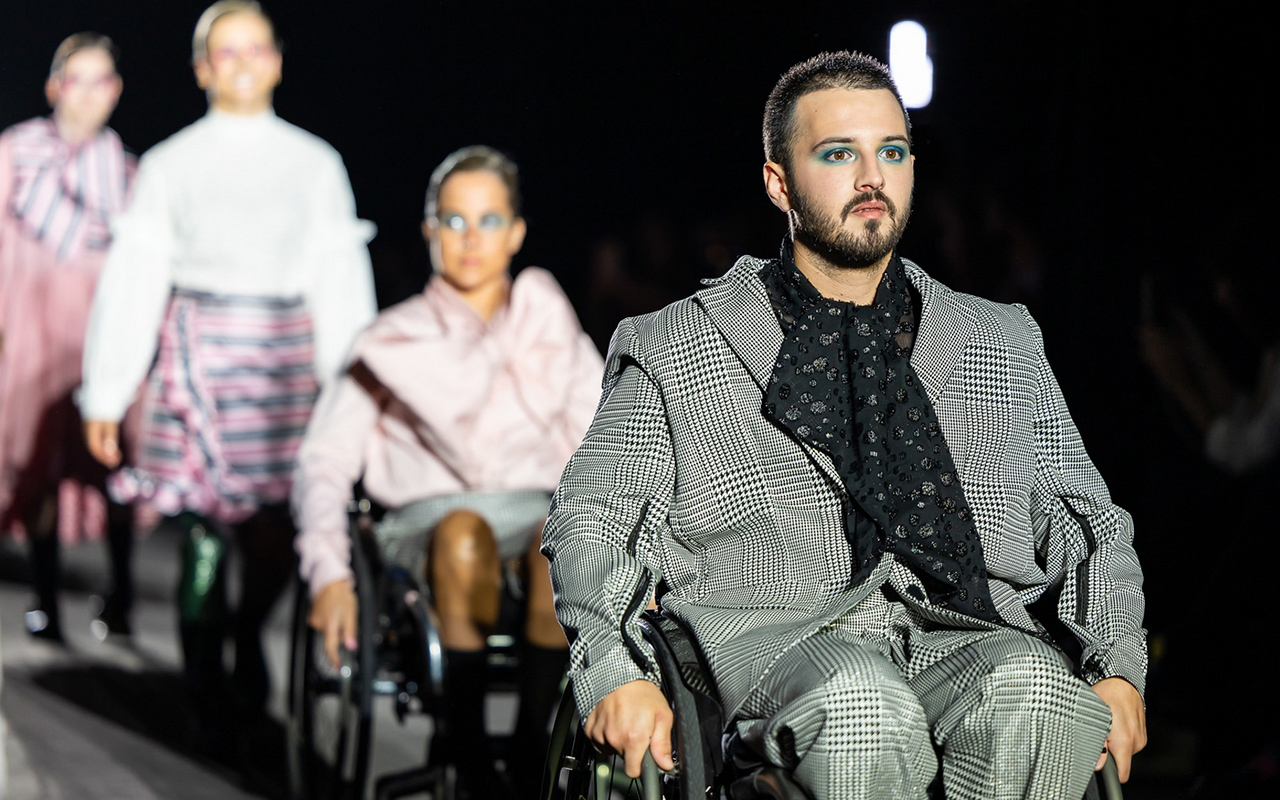(Español) Nueva colección: Otoño-Invierno 2023/2024
Yayoi Kusama , the revolutionary queen of polka dots, in Bilbao
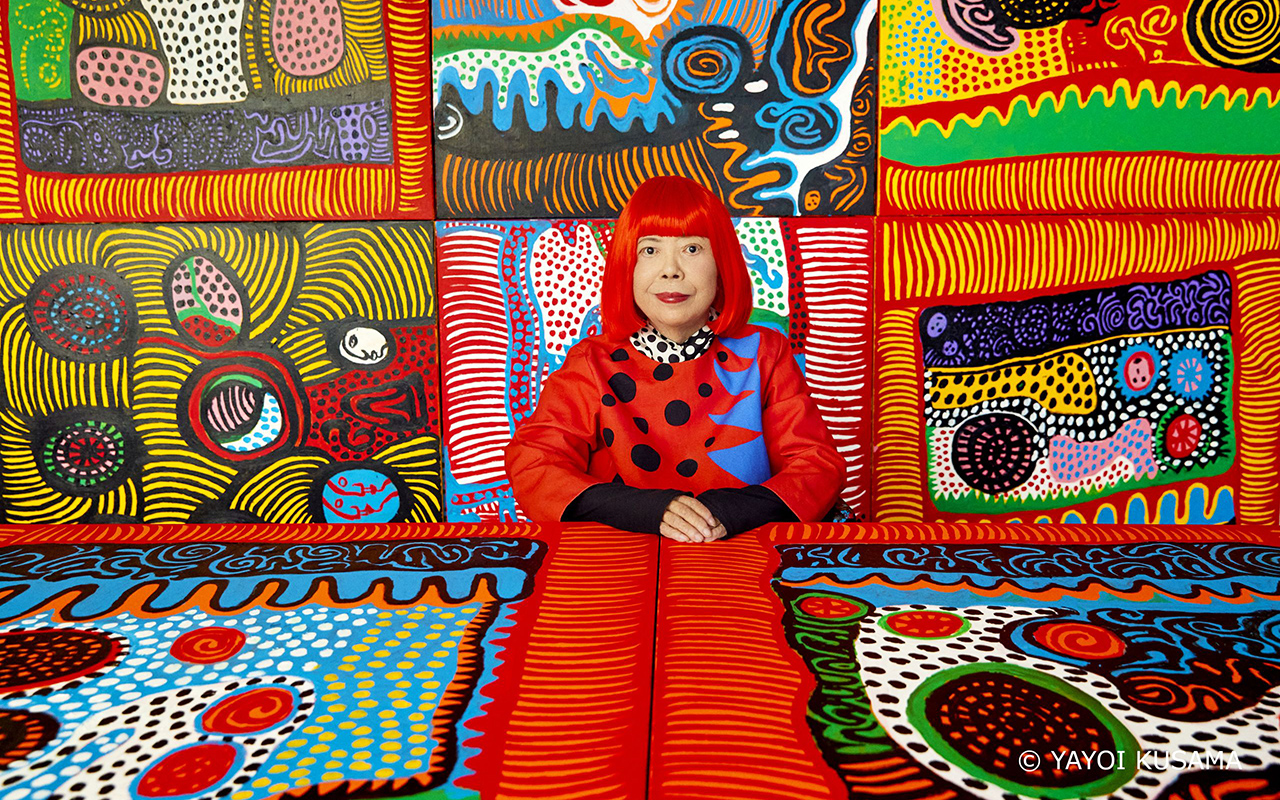
Portrait of Yayoi Kusama. Courtesy of Ota Fine Arts, Victoria Miro, and David Zwirner © YAYOI KUSAMA. Photo: Yusuke Miyazaki.
She is considered a living legend, a revolutionary who has stood out in multiple artistic movements from the 1960s to the present, an admired visual artist capable of connecting art with fashion through her unique universes, full of geometries. Or rather polka dots, her most identifying feature. Yayoi Kusama (Matsumoto, Nagano, 1929), yes the flesh and blood one -and not the hyper-realistic robotic figure that Louis Vuitton made for her in her latest collaboration with the brand- is the absolute protagonist of one of the most visited exhibitions in the Bilbao Guggenheim . Turned into a true global cultural icon, in the last seven decades, Yayoi Kusama has devoted herself to her avant-garde vision with conviction, perfecting her aesthetic vision, which is a faithful reflection of her philosophy of life. As the artist herself usually says: “What does it mean to live a life? I get lost in this thought every time I create a work of art.
This exhibition goes beyond a simple overview of her career. It seeks to focus on the existential questions that drive the creative explorations of the Japanese artist and writer. Through her paintings, drawings, sculptures, installations, and documentary material on her performances, the show offers an in-depth analysis of her practice, from her first drawings as a teenager during World War II to her latest immersive mirror installations.
Organized according to chronological and thematic criteria, Yayoi Kusama : from 1945 to today addresses the six key themes that run through the artist’s life: ‘Infinity’, ‘Accumulation’, ‘Radical Connectivity’, ‘The Biocosmic’, ‘Death’ and ‘ The energy of life’. These interrelated themes appear and evolve within the obsessive universe of Kusama, who has been agitating the art scene and society for decades in favour of the “healing of all humanity”.
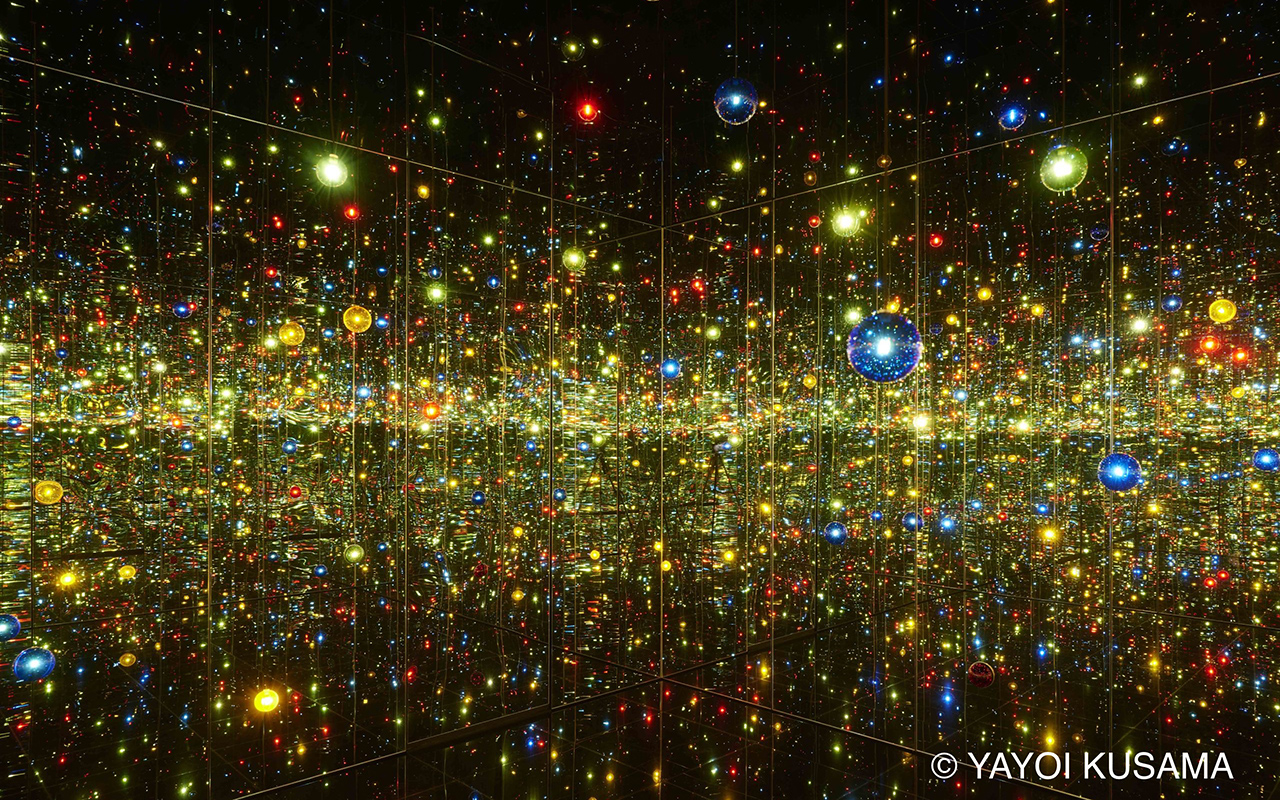
Yayoi Kusama. Infinity Mirrored Room – A Wish for Human Happiness Calling from Beyond the Universe, 2020. Mirrors, wood, LED lighting system, metal, acrylic panel. 293.7 × 417 × 417 cm. © YAYOI KUSAMA. Courtesy of Ota Fine Arts.
Some keys to understand Yayoi Kusama
Self portrait
Kusama ‘s work is based on self-affirmation , self-destruction , self-promotion , self-invention , self-referential and self-portrait, even in those creations where the representation of her own image is less explicit. This room brings together some of the paintings and drawings made by Kusama within the genre of the self-portrait, which occupies a prominent place in her production.
This section begins with Self-Portrait (1950), a dark painting in which a flesh-pink sunflower floats above a human mouth, and is one of the first works to be given that title; The space is presided over by her Portrait (2015), in which Kusama arranges some of her characteristic motifs —polka dots, pumpkins, nets and tentacular shapes— in a composition constructed as a collage and dominated by a hieratic figure.
Infinite
Kusama grew up in a seed nursery surrounded by vast fields of flowers. However, in 1957 while flying over the Pacific on her first flight to the US, the sight of the ocean inspired her well-known paintings of Infinity Webs. In this series, the canvases are obsessively covered in tiny arcs painted in one swift gesture, creating an expressionist pattern of interconnected dots and webs. The free brushstroke contrasts with the reiteration of the motif, which makes it impossible to identify the beginning and end of this universe without hierarchies, whose dimensions were expanding within Kusama ‘s production until the public was immersed in the infinity of her installations.
Accumulation
Kusama ‘s art , the concept of accumulation is not simply an obsessive-compulsive tendency, nor an innate desire for repetition, but can be interpreted as a desire for expansion driven by the artist’s need to broaden her creative vision.
After creating the ‘Infinity Nets’, Kusama developed ‘Accumulation’, a series of collages made with reused fragments of paper and soft sculptures in repetitive forms. In these pieces, an everyday object, such as a chair, is transformed by accumulating on it a large number of phallic and tubular shapes of stuffed and sewn fabric, which make the object itself and its function disappear. Little by little, the compulsive desire to multiply these soft shapes led Kusama to expand her vision to the mirrored rooms of infinity, which she began in 1965, and to the silver or patterned fabrics she made during the 1970s and 1980s, such as ‘Accumulation de manos’, where a sofa and chairs are covered in hundreds of silver gloves
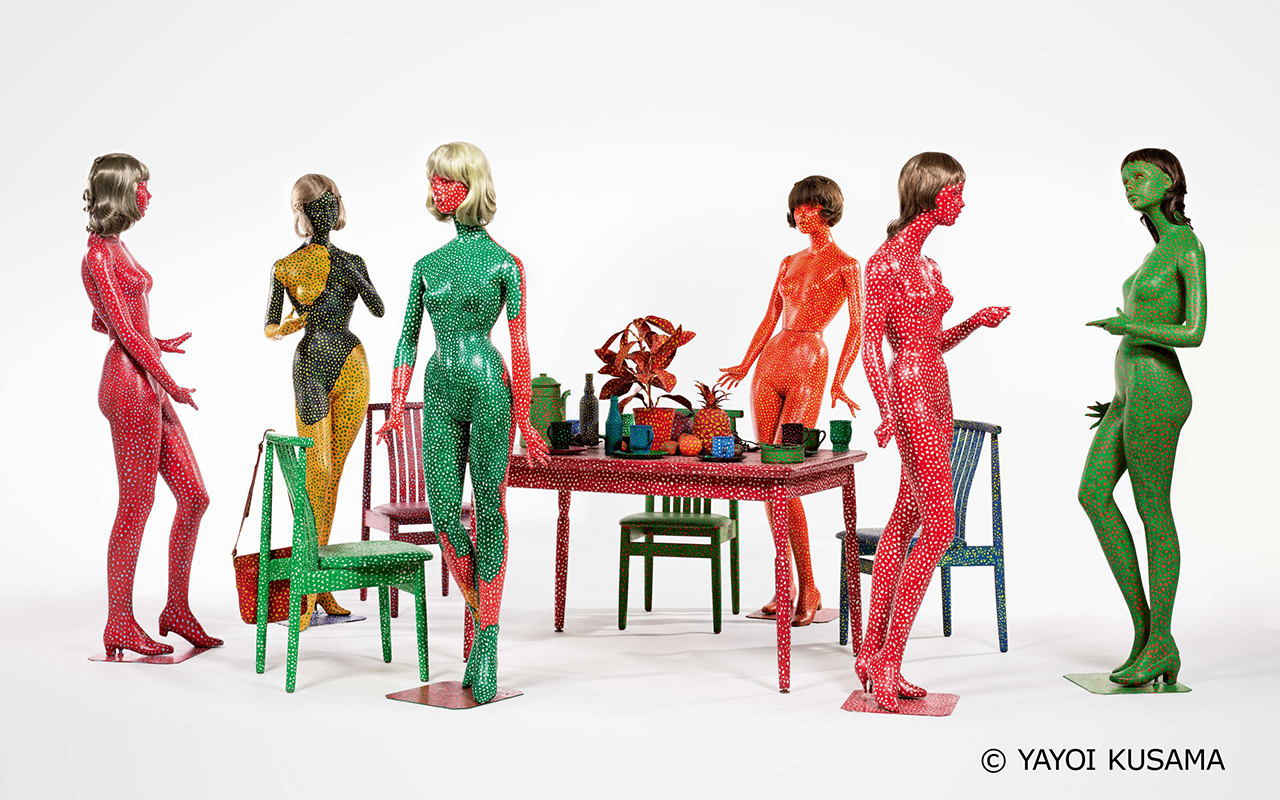
Yayoi Kusama. Self-Obliteration (Auto-obliteración), 1966–1974. Painting on mannequins, table, chairs, wigs, handbag, cups, plates, ashtray, pitcher, plastic plants, plastic flowers, plastic fruits. Variable dimensions. M+, Hong Kong. © YAYOI KUSAMA
Radical connectivity
In the late 1960s, the struggle for civil rights and the war in Vietnam generated a counterculture atmosphere in which Kusama developed a practice centered on public action and performance. The artist denounces race and gender stereotypes, criticizes the warmongering US policy and attracts the attention of the media with her provocative happenings, especially those featuring naked bodies covered with polka dots, which are acts of “self-obliteration”.
Kusama ‘s philosophy , which represents the liberation of the self as a form of group healing and deeply connects people, especially those who live on the margins of society. The Japanese artist uses the power of the media to spread her philosophy and intensify her visibility and notoriety.
Biocosmic
Where does your obsession with polka dots come from? Yayoi Kusama gives us the answer: “Our earth is just a mole among the millions of stars in the cosmos. Polka dots are a path to infinity. We erase nature and our bodies with polka dots, we integrate into the unity of our environment.”
Her childhood near her family’s plant nursery made the Japanese artist feel a deep bond with organic life, which the artist considers to be connected to the dimension and space of the cosmos. ‘Lo Biocósmico ‘ expresses her belief that the earthly and the heavenly are the same. As a child, she begins to observe the anatomy of plants, their life cycles, and the union between heaven and earth. Perhaps the most consistent image of the biocosmic in her work is that of her distinctive gourds, with whimsically undulating and mottled surfaces, which Kusama identifies as a benevolent plant spirit and reflection of her own soul. Her stance towards nature illustrates how Kusama expresses her alienation from the world and her expansive need to commune with the cosmos.
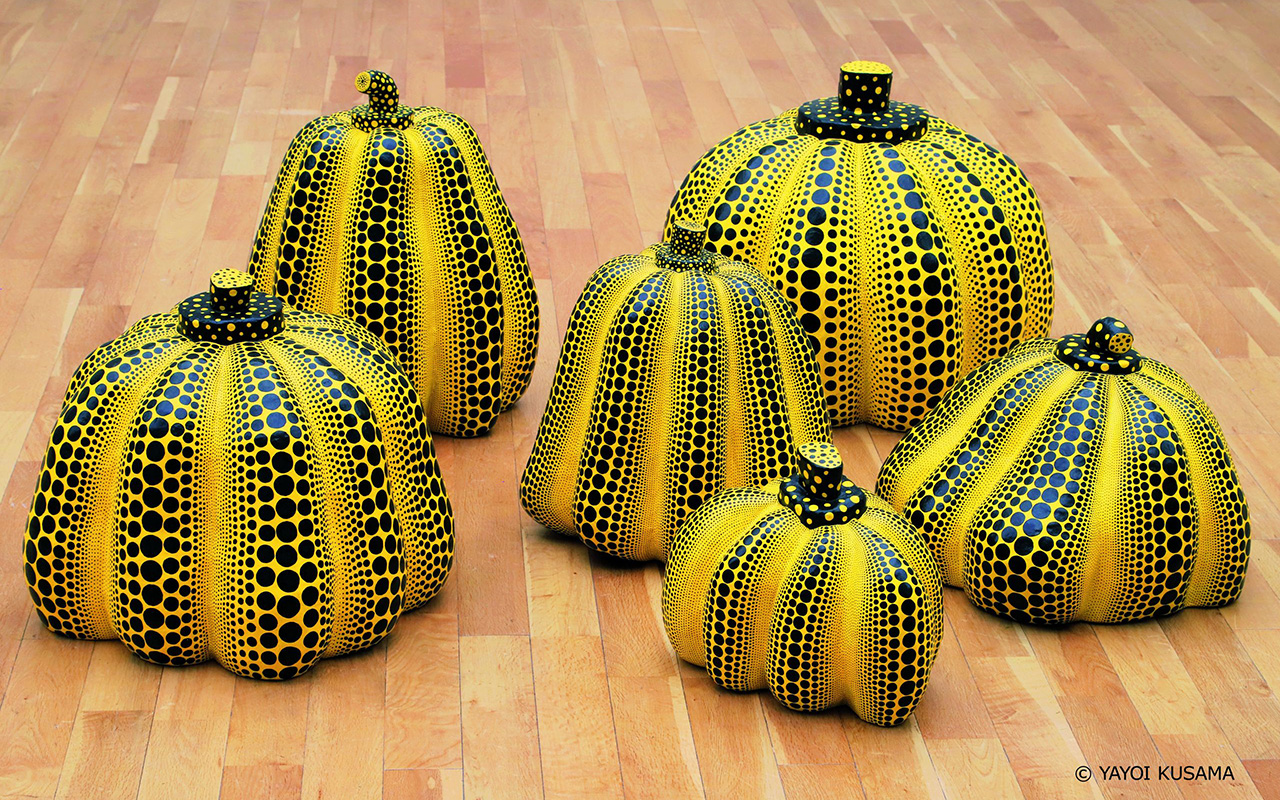
Yayoi Kusama. Pumpkins, 1998–2000. Mixed media. 6 pieces, variable dimensions. © YAYOI KUSAMA
Death
““What death means, its colours and its special beauty, the stillness of its footsteps and the ‘nothing’ after death. Now I am in a phase in which I create art for the rest of my soul, accepting all this”, says Kusama at the exhibition at the Guggenheim in Bilbao.
Kusama ‘s work is constantly on the threshold between life and death. A childhood surrounded by the ephemeral existence of plants in the family nursery, adolescence marked by the war and its consequences, and especially the death of her father and her close friend Joseph Cornell in the mid-seventies, led the artist to consider that death is not the end point, but another phase of existence that can give rise to a new one. Sometimes in her creative struggle and in despair, Kusama yearns to be free of what she describes as the “languorous weight of life.” However, through her artistic and literary practice, she transforms that desire into a kind of therapeutic fantasy, into a spiritual reward in the “solemn beauty” of death and in the loss of the ego as a return to eternity.
The force of live
Kusama ‘s art and psyche underwent a major change. With the arrival of the long-awaited and well-deserved public recognition, both from her international exhibitions and from her publications, praised in avant-garde literary circles, the healing power of art and the celebration of life become the central themes of her production. As she stated in 1999, Kusama came to believe that her role was to transform her suffering through art “for the healing of all humanity.” In the new millennium, the Japanese artist wants to amplify this message. For this reason, the colourful paintings and sculptures from one of her latest series, My Eternal Soul (2009–) and I Pray Every Day for Love (2021–today), perhaps represent the culmination of this commitment
The exhibition “Yayoi Kusama : from 1945 to today” will remain open to the public until October 8.
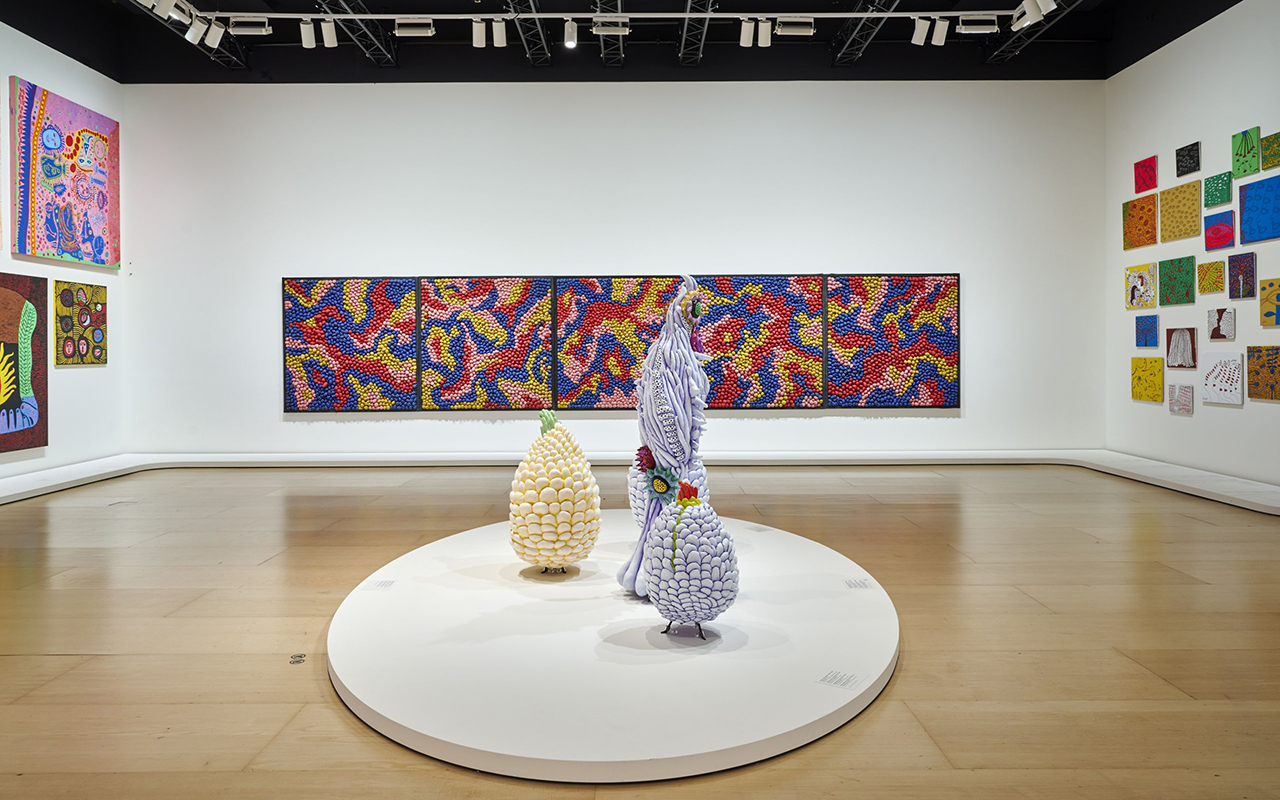
Aquamarine, the colour of calm and serenity
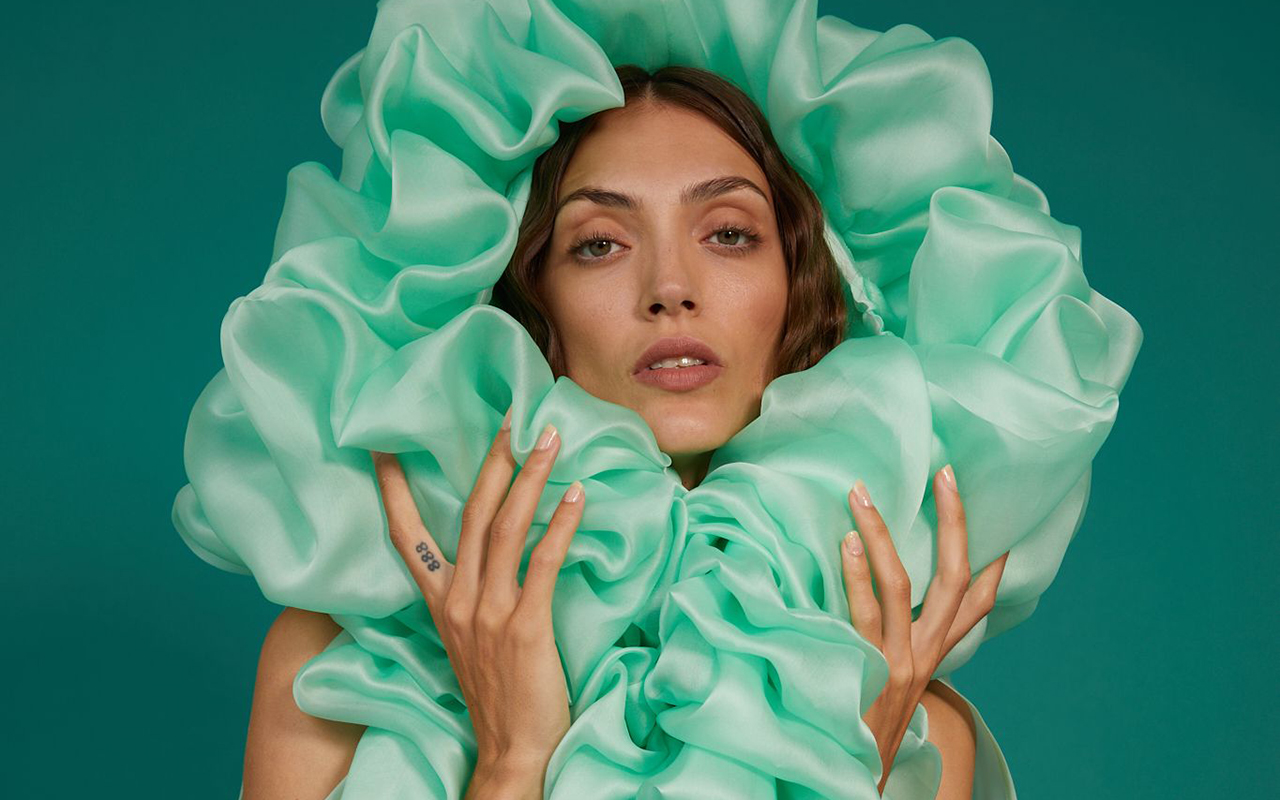 Neus Bermejo in an aquamarine dress by designer Mariano Moreno. Photo: Courtesy of Mariano Moreno
Neus Bermejo in an aquamarine dress by designer Mariano Moreno. Photo: Courtesy of Mariano Moreno
No one doubts that the colour of the year is Barbie pink, a more striking transformation of the Millennial pink we’ve been seeing in the past decade. It resembles bubblegum pink or plastic pink, all of which have more artificial undertones. However, beyond the fuchsia and soft pink that dominate the Barbiecore trend, other colours are emerging this season. One of them is aqua green, which captivates with its discreet charm and its calming and refreshing nature.
Aqua green, also known as blue-green or aquamarine, immerses us in the fascinating transparent, warm and shallow waters, evoking emotions and transmitting subtle messages associated with summer. Paradisiacal tropical beaches, lagoons surrounded by nature and river beds with crystal clear waters are some of the images that come to mind when contemplating this pure tonality. It is perfect for the summer, since it is closely linked to the sea and nature.
The name makes the thing
This colour gets its name from the gemstone that represents it, aquamarine. A gem characterized by its beautiful light bluish-green hue. The term “aquamarine” comes from the Latin “aqua marina”, which means “sea water” to poetically evoke the sparkles and transparency of water.
Since ancient times, the colour aquamarine has been appreciated for its beauty and its connection to aquatic nature. The ancient Romans attributed protective and healing powers to this stone. Also, in the Christian tradition, aquamarine was associated with purity and innocence. Over the centuries, it has been used in jewelry, especially gemstones, but also in ceramics and ornamentation in different cultures, from the ancient Egyptians to the Native Americans.
Psychological and sensory properties
On a sensory level, aquamarine is a refreshing and calming hue for the eyes. It has a luminous, translucent quality that evokes feelings of serenity and freshness. Not surprisingly, this hue is associated with peace, clarity of mind, and harmony—valuable traits in fashion, advertising, and interior design when seeking to create a serene and welcoming environment. Also, their presence can stimulate creativity and promote a sense of relaxation.
This colour is also attributed qualities that encourage emotional openness and the ability to express yourself. Its soft and luminous hue makes it a popular choice for those who want to convey a fresh, sophisticated and elegant image. In addition, it is related to youth, since its shades instill confidence and magic, making people feel renewed both inside and out, with positive energy.
A notable example of a brand that has embraced aquamarine in its identity is Tiffany&Co. Its iconic shade of aquamarine blue is used in its packaging and presentation, providing a duality between elegance and carefree freshness. Likewise, the renowned sportswear brand Nike has incorporated the aquamarine color into its latest collections of sports footwear and clothing, providing a fresh and energetic look to its products.
Without being essential, it stands out
Let’s not fool ourselves. It’s true that aquamarine hasn’t been a front row colour on the fashion catwalks, at least until now. It is not usually the favourite of the designers and it is not abundant in the collections, since its relaxing nature is incompatible with the frenetic rhythms of the industry. However, it is true that aquamarine is more easily found in spring-summer collections, since it refers to crystal clear waters on sunny days and evokes paradisiacal destinations. In addition, it favours the tanning of the skin as it is a soft tone that gives it prominence.
Despite this, renowned designers have embraced aquamarine in their creations. For example, the Italian designer Roberto Cavalli has used this colour in his prints and haute couture designs, adding a touch of sophistication and freshness. Brands like Versace, Gucci and Carolina Herrera have also incorporated aquamarine into their collections, both in clothing and accessories.
This summer, through the mermaidcore trend, aquamarine has gained more presence. In this sense, the colour of the crystalline waters has been shown in total looks that Max Mara has explored with designs such as retro-style swimsuits, including hats. Fendi has also opted for this hue, combining pants with printed tank tops. For its part, Armani has presented a more subtle proposal, with a strapless dress combined with trousers.
Although aquamarine may not be the usual star in fashion, we cannot deny its charm and versatility. Its presence in the collections of renowned designers and its association with freshness and sophistication make it an attractive and elegant colour.
From Gratacós, we join the charm of the aquamarine colour. In our online store, we offer a selection of seasonal fabrics dyed with this refreshing colour, which brings vitality and sophistication. When we enjoy our well-deserved vacation, we will see life with a touch of aquamarine colour.
Pics: The 2nd Skin y Max Mara
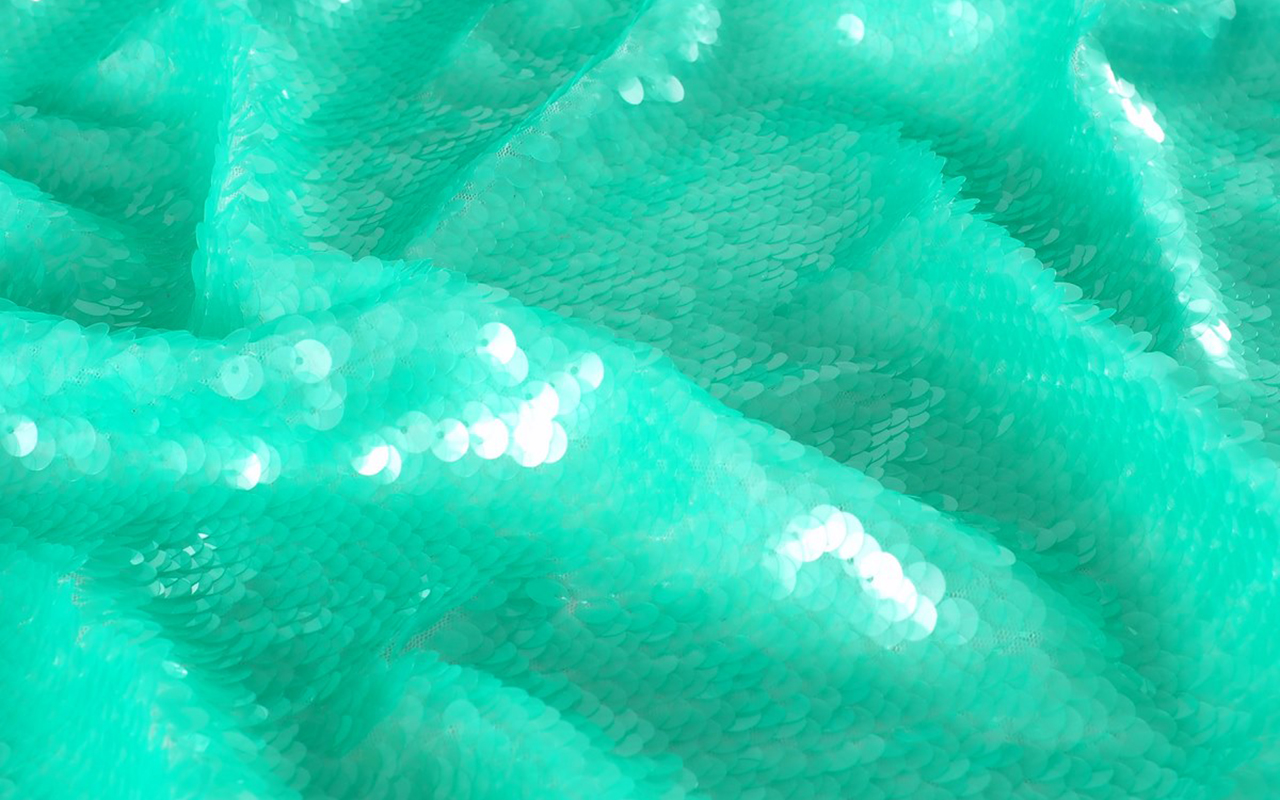
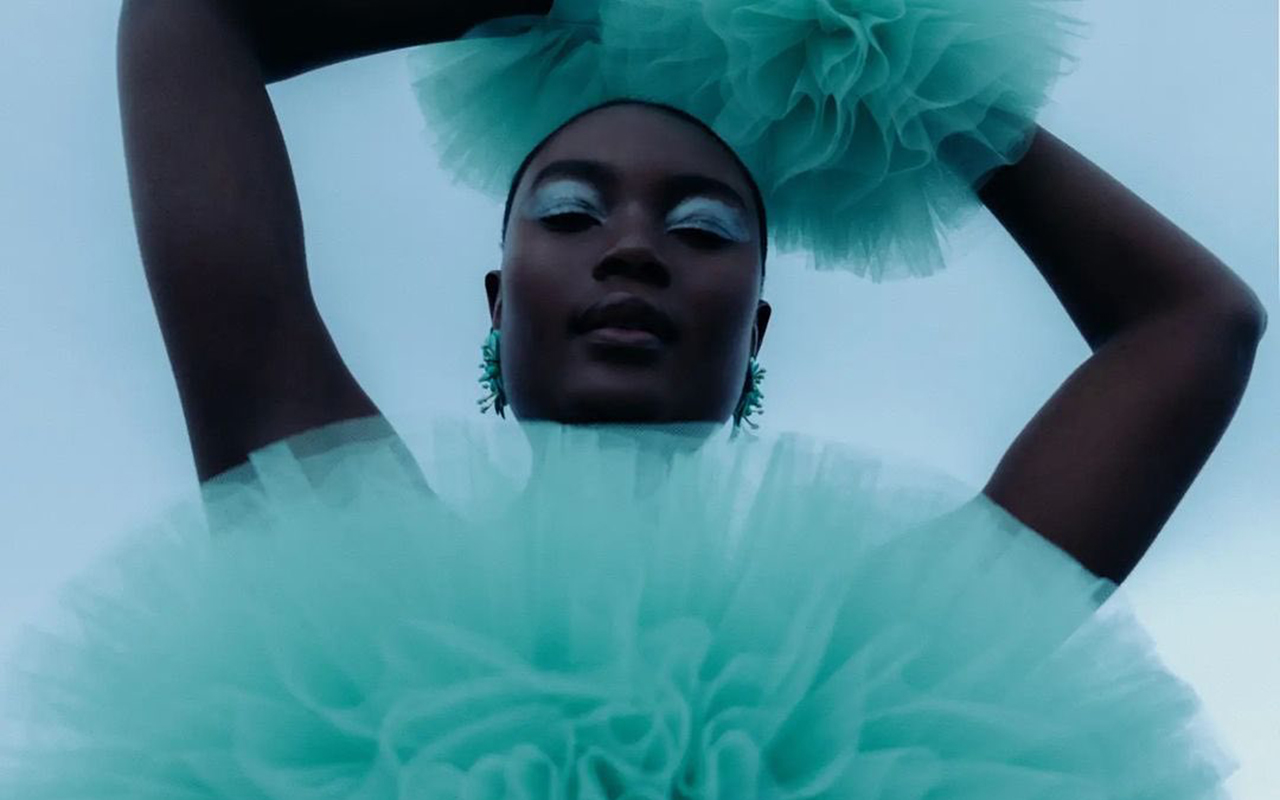
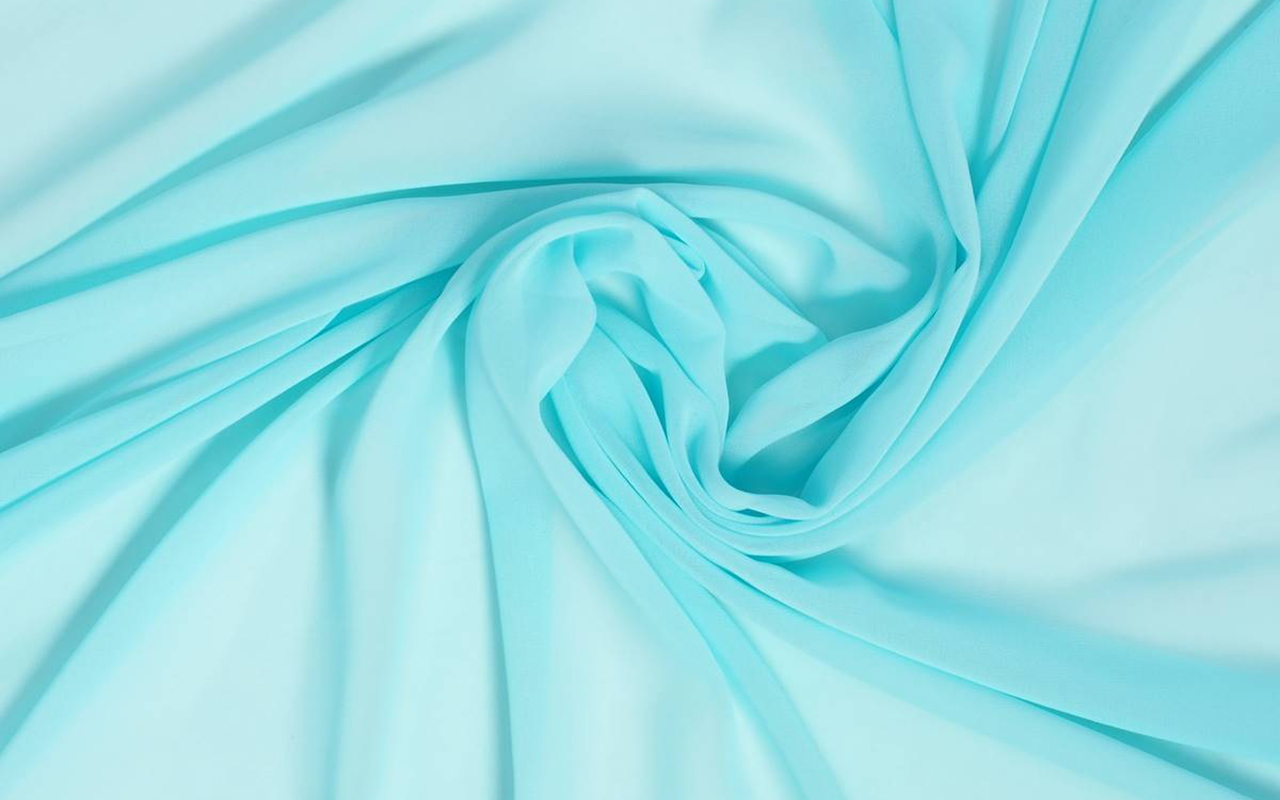
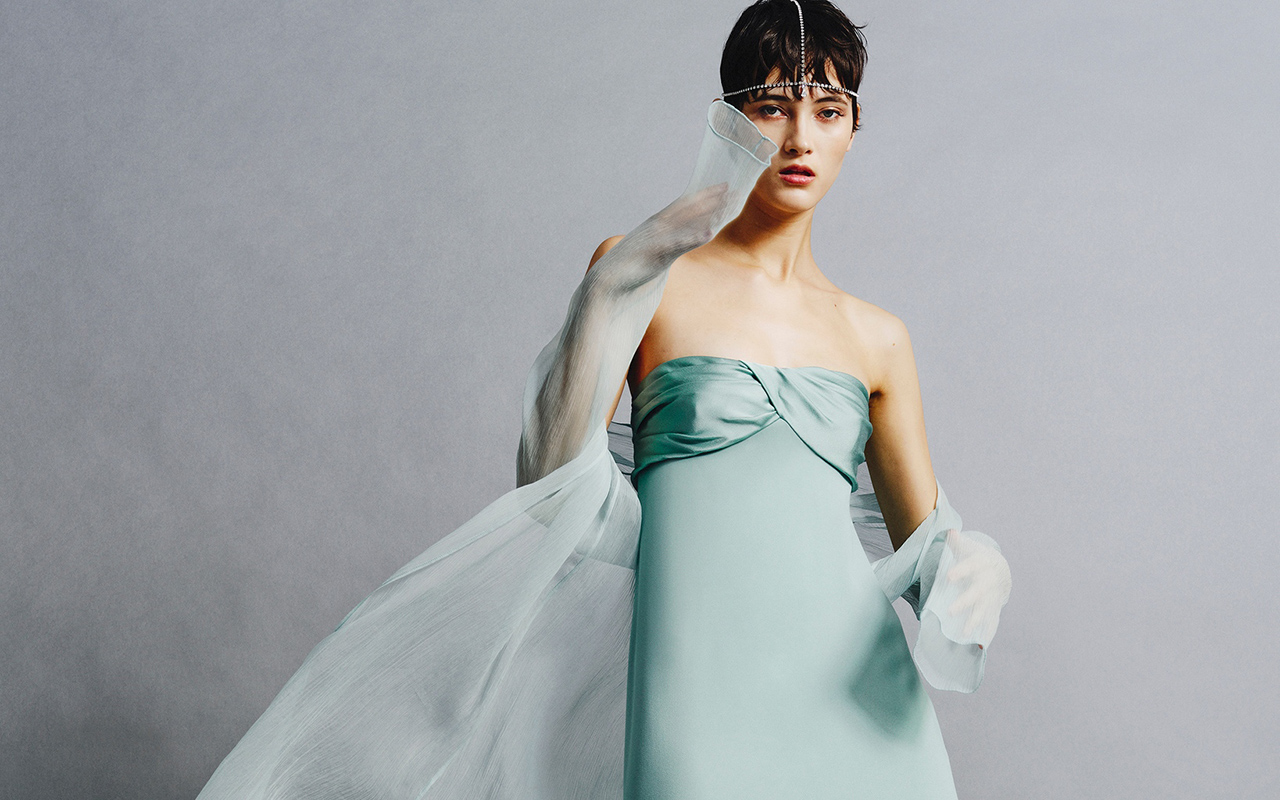
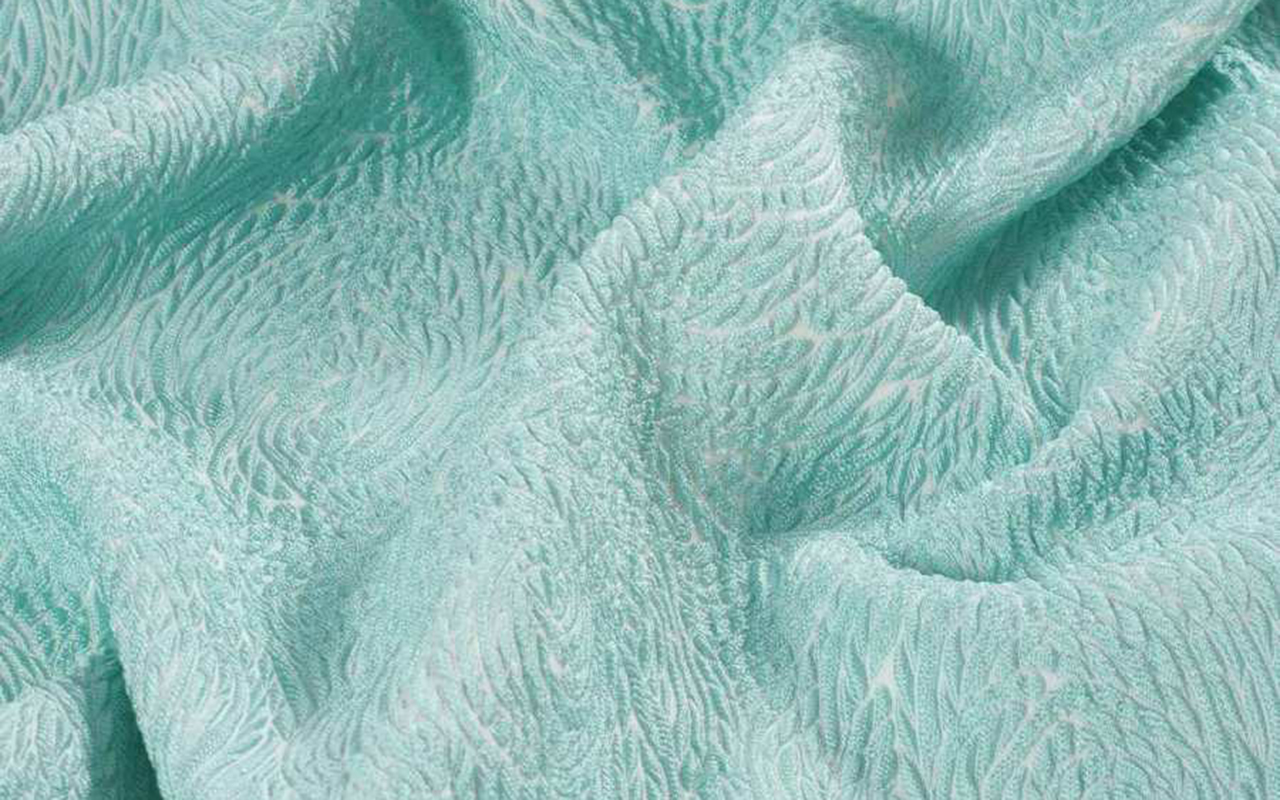
Mermaidcore: fashion inspired by mermaids
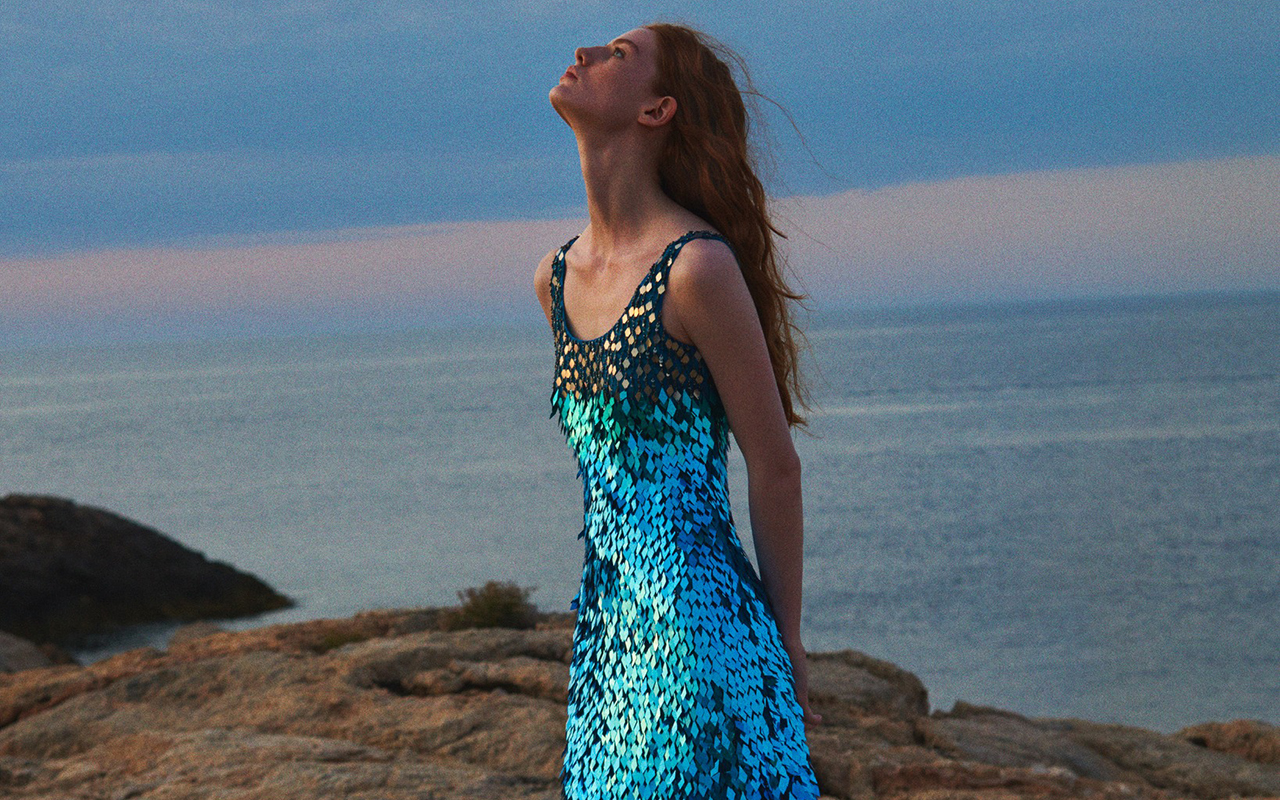
The Little Mermaid is all the rage, pardon the Barbie doll and her barbicore style. And not only its long-awaited remake, released on May 26 in theatres, has won a legion of fans among both children and adults. Now, the aesthetics of these mythological creatures have also seduced the fashion industry, which surprises with the most popular trend of the summer: the mermaidcore with designs that transport us to the depths of the ocean.
The catwalks speak
Fashion’s interest in reflecting the fascinating underwater world is not new. In fact, French designer Marcel Rochas is credited with creating the mermaid silhouette in the 1930s, which was later popularized in fashion circles by Jean Patou. His dress inspired by the aquatic world was published in an edition of Vogue magazine in 1933. Since then, the mermaid style has evolved in various ways and today, designers such as Bottega Veneta or Bluemarine have reinterpreted the image of this mythological creature offering their own vision with clothes that move between the sophistication and the casual.
Investigating more into the current collections we see that the big brands continue to explore the collective imagination of mermaids. For example, for her Resort 2023 collection, Alberta Ferretti gave a very marked nod to these marine creatures by closing her collection with evening outfits full of iridescent blue sequins. In a similar line, Gucci also revealed a striking sparkly dress in green tones and a flowing silhouette, which already predicted the new rise of the trend. Or Tom Ford with a festive collection full of sequins and colours of the sea, like the cut-out design in silver and green that Gigi Hadid wore in a style with curly hair.
The curious thing is that everything suggests that the mermaidcore trend is going to extend throughout 2023 until it permeates the next seasons. Far from being forgotten, in autumn, clothes with the effect of scales and skirts in the shape of a mermaid tail also mark the design of Bottega Veneta. As well as Roberto Cavalli ‘s evening gowns, whose catwalk models sported wavy hairstyles with a subtle wet look and smoky eye makeup. And in 2024, the Resort collections continue to rescue this aquatic environment, as has already been seen in Louis Vuitton with sequined skirts that create optical illusions.
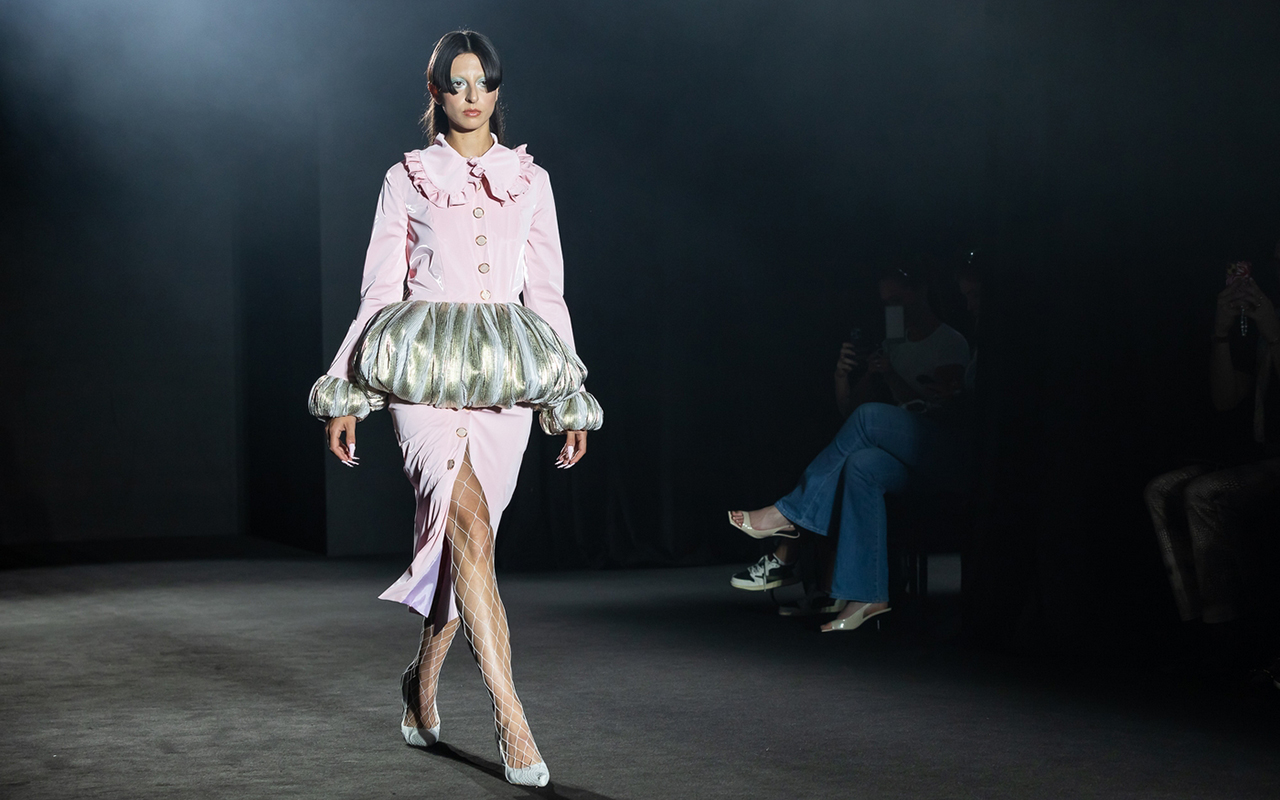
Mermaid designs made in Spain
This global trend also influences Spanish designers. Many of them have proposed creations that are inspired by the shapes of the marine world and follow this mermaidcore aesthetic code. In the last edition of 080 Barcelona Fashion, Anel Yaos presented a collection of an intimate nature that plunges into the seabed to present its hallmarks, marked by romanticism, fantasy and the naïve in pieces of clothing that do not distinguish genders. “Beings without names or appearance, intangible creatures, aquatic myths have been with me since I was a child, arousing in me feelings that range from tranquility to fear, and remind me that I am not alone,” he said backstage at the Catalan catwalk. The ‘Deep 23’ proposal reflects the fluidity of light fabrics such as silk, chiffon and cotton, contrasting with the forcefulness of velvet and neoprene, through a fascinating combination of prints and colours that fit harmoniously with each other.
The Sevillian designer investigates new materials such as latex and towels, and continues focusing on upcycling of bedspreads, vintage buttons and elements that evoke the ocean, such as fishing nets and shells. Furthermore, ruffles, 3D flowers and lace overlays take centre stage. The colour palette of the proposal flows between pastel tones and other more intense ones, such as moss green and black.
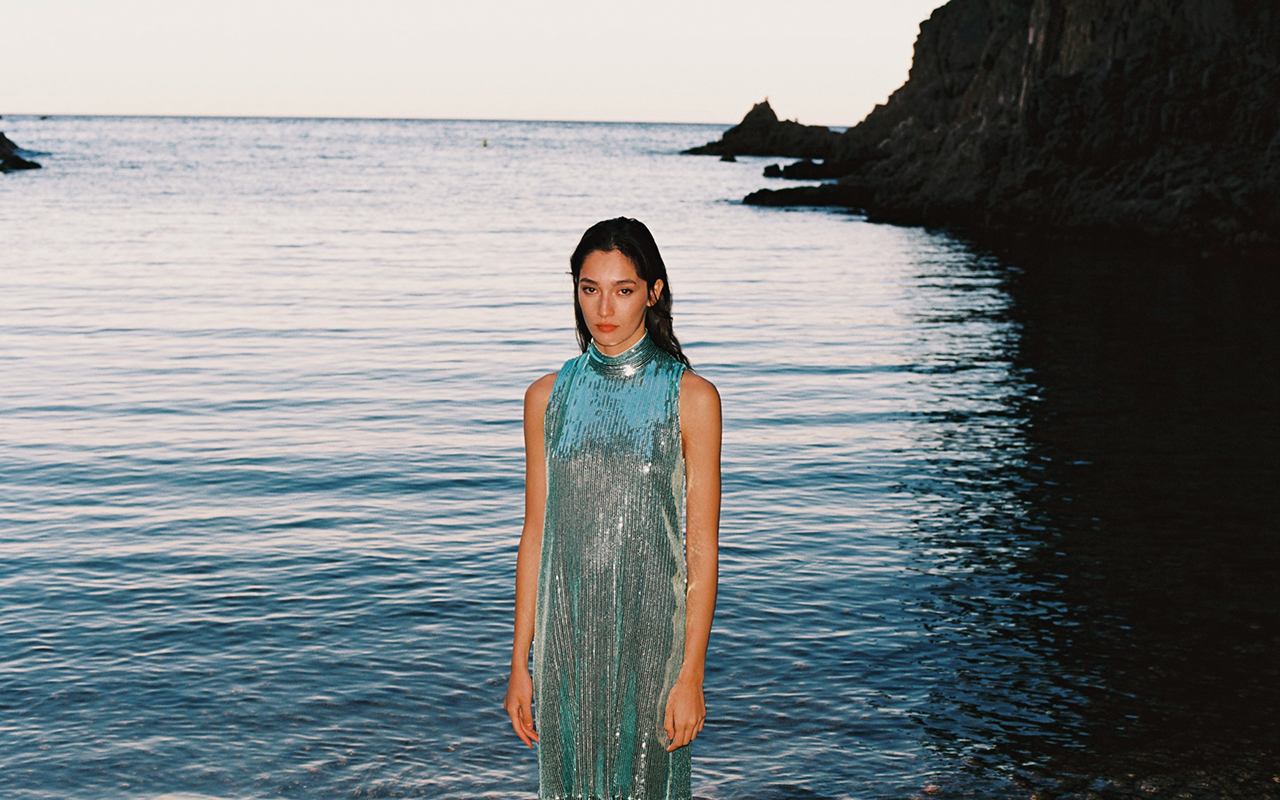
Another brand that explores sensuality with feminine proposals loaded with transparencies, sequins, iridescence and lace is Eiko Ai, led by the Barcelona designer Glò Lladó. The firm immerses itself in dreamlike proposals that are inspired by the ephemeral beauty of natural landscapes. According to Lladó, “on this occasion her inspiration lies in the movement of water and marine fauna, such as jellyfish”. With her ‘Underwater Life’ collection, Eiko Ai seeks to establish a connection with aquatic nature through elements such as plants, animals and other organisms, as well as fantastic beings that inhabit the oceans.
To achieve this, the Barcelona firm uses transparencies that allow light to pass through, soft satins in bright tones, ruffles, volumes and vaporous and ethereal fabrics that capture the movement of the waves of the sea. In addition, the pearly tones present in her garments emulate the scales of mermaids, thus completing the marine inspiration of her collection.
Following the latest trends closely, the large fashion distributors have not wanted to miss the opportunity to keep the aesthetics of these fascinating marine creatures on the crest of the wave. Zara kicked off the new season with an editorial dedicated to modern mermaids, presenting garments that have been best sellers. Among the proposals are sequined tops, satin skirts and a silver dress that enhances the feminine silhouette. In the middle of the sales season, the Inditex flagship continues to bet on mesh fabrics with small jewel inlays and sequins of different sizes in blue and metallic tones.
At Gratacós we also have an assortment of shiny fabrics that could follow the percepts of the mermaidcore trend. Find our most premium sequins here with different sizes, shapes and spectacular multicolour designs.
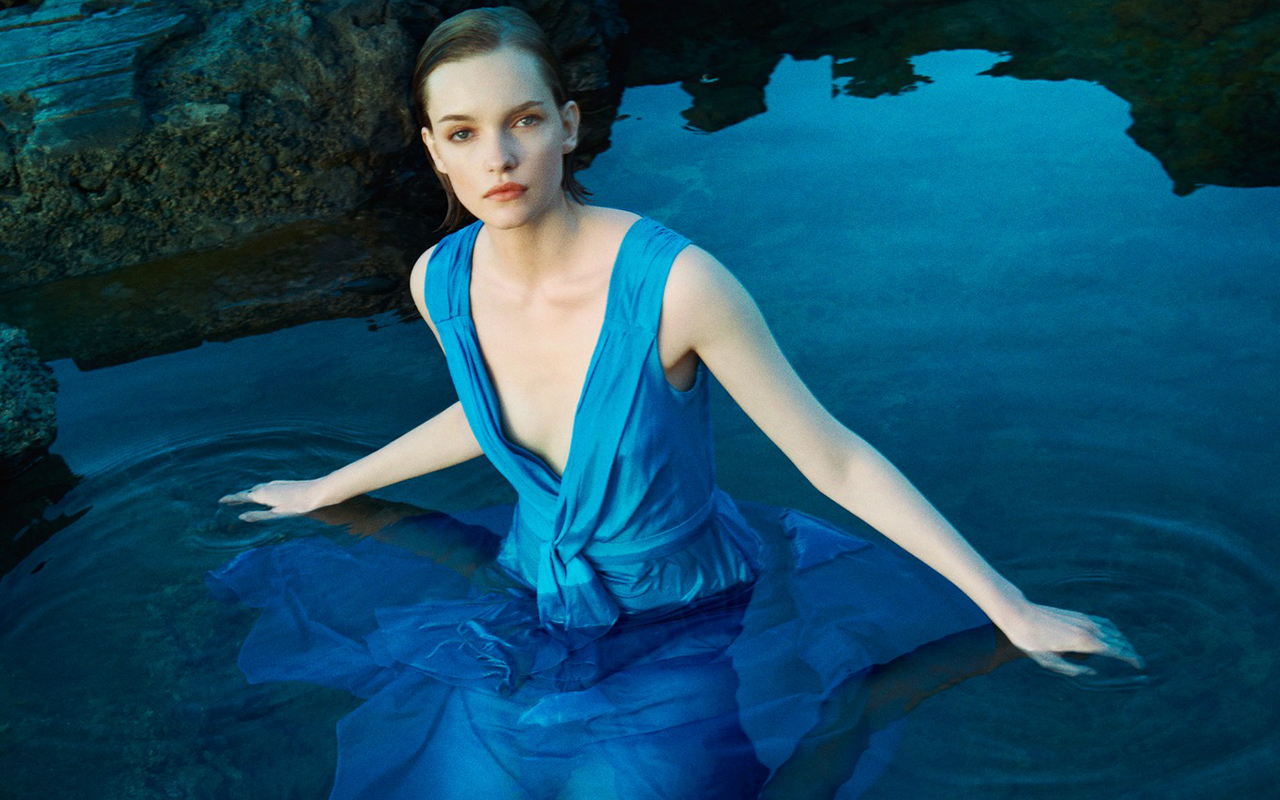
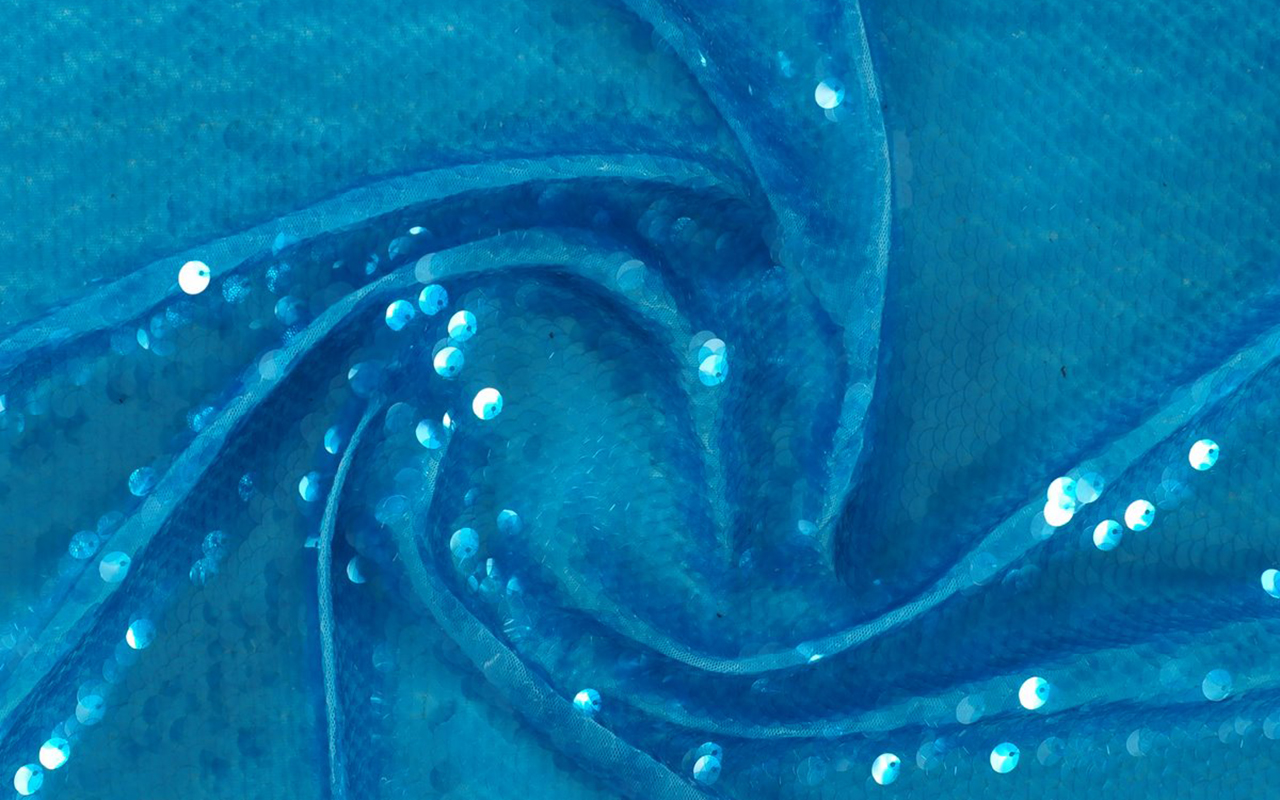
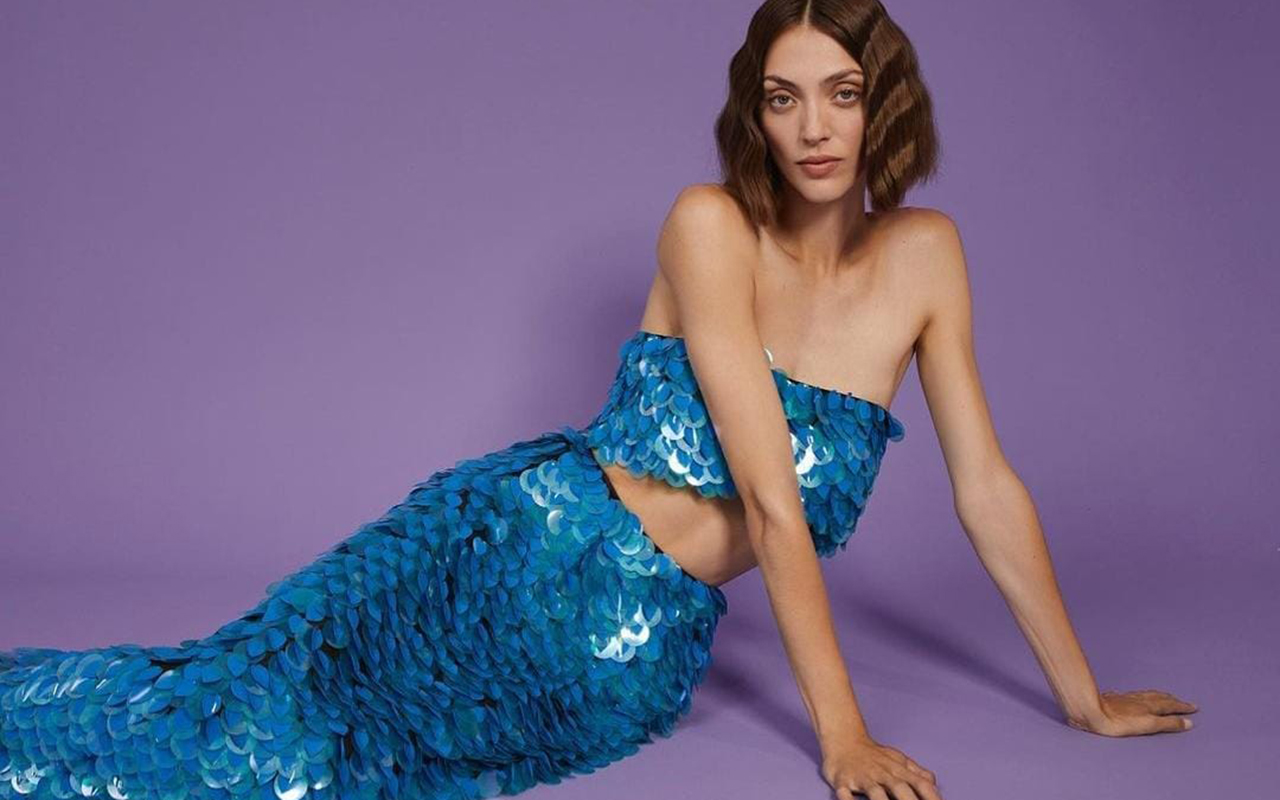
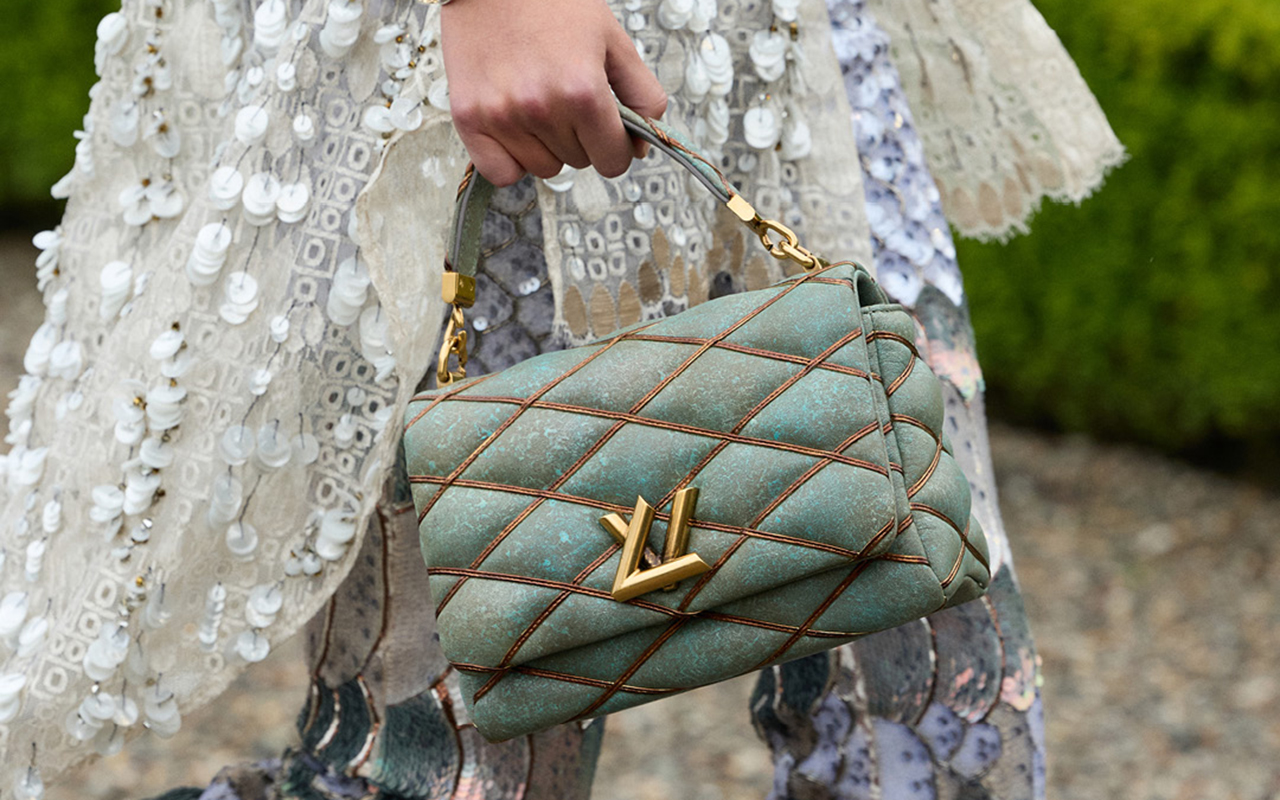
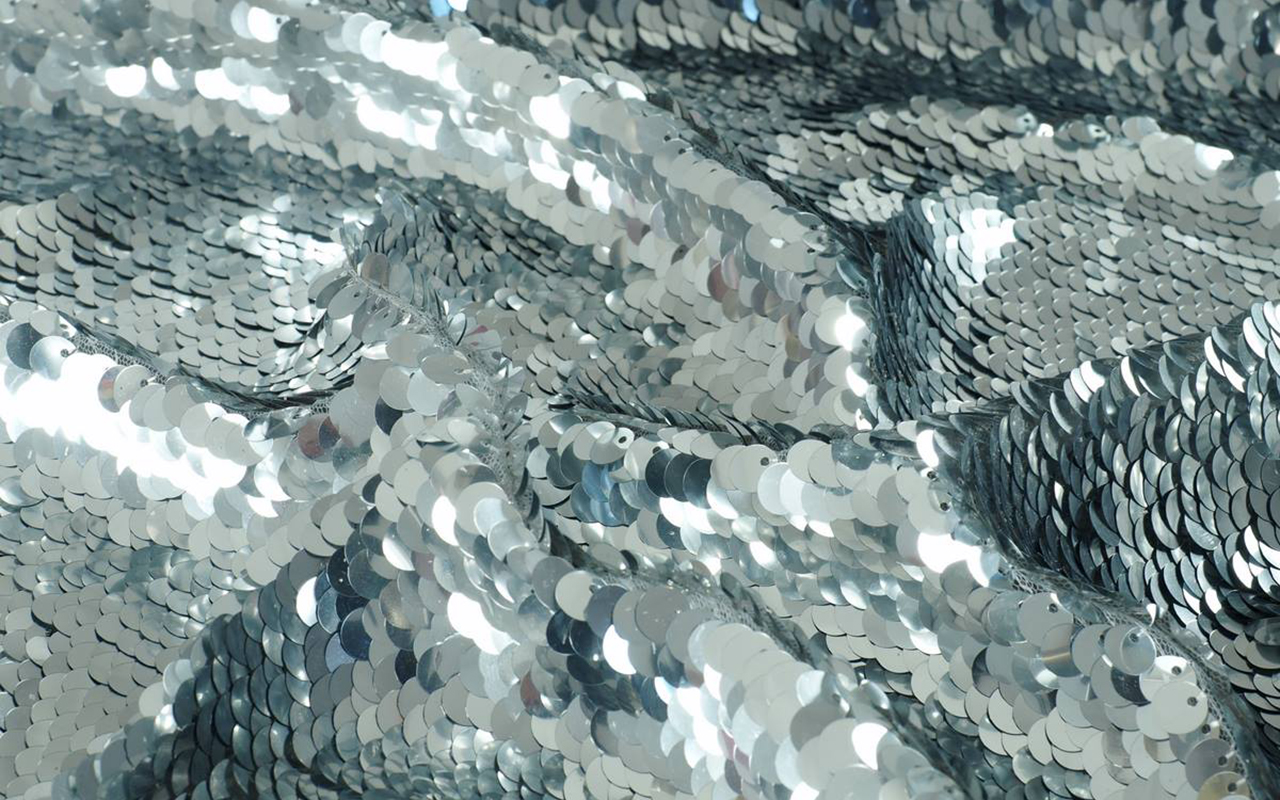
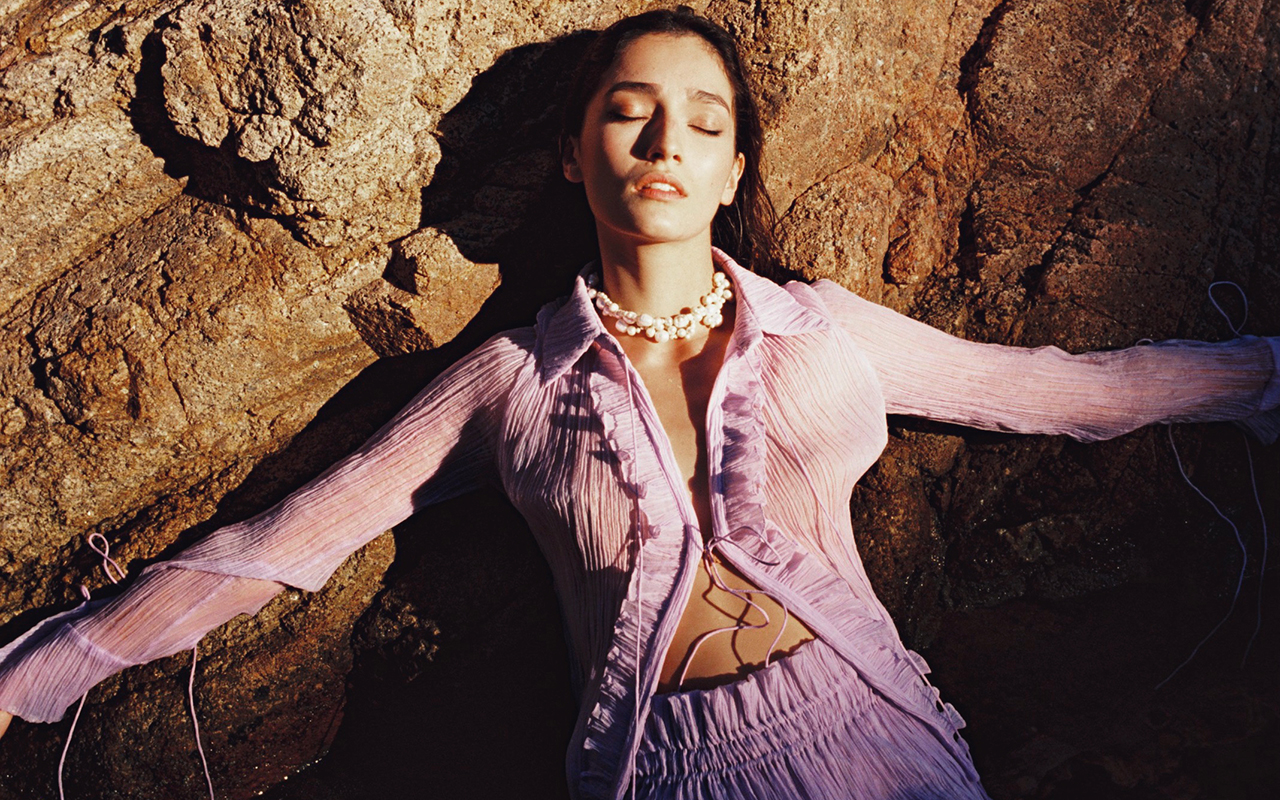
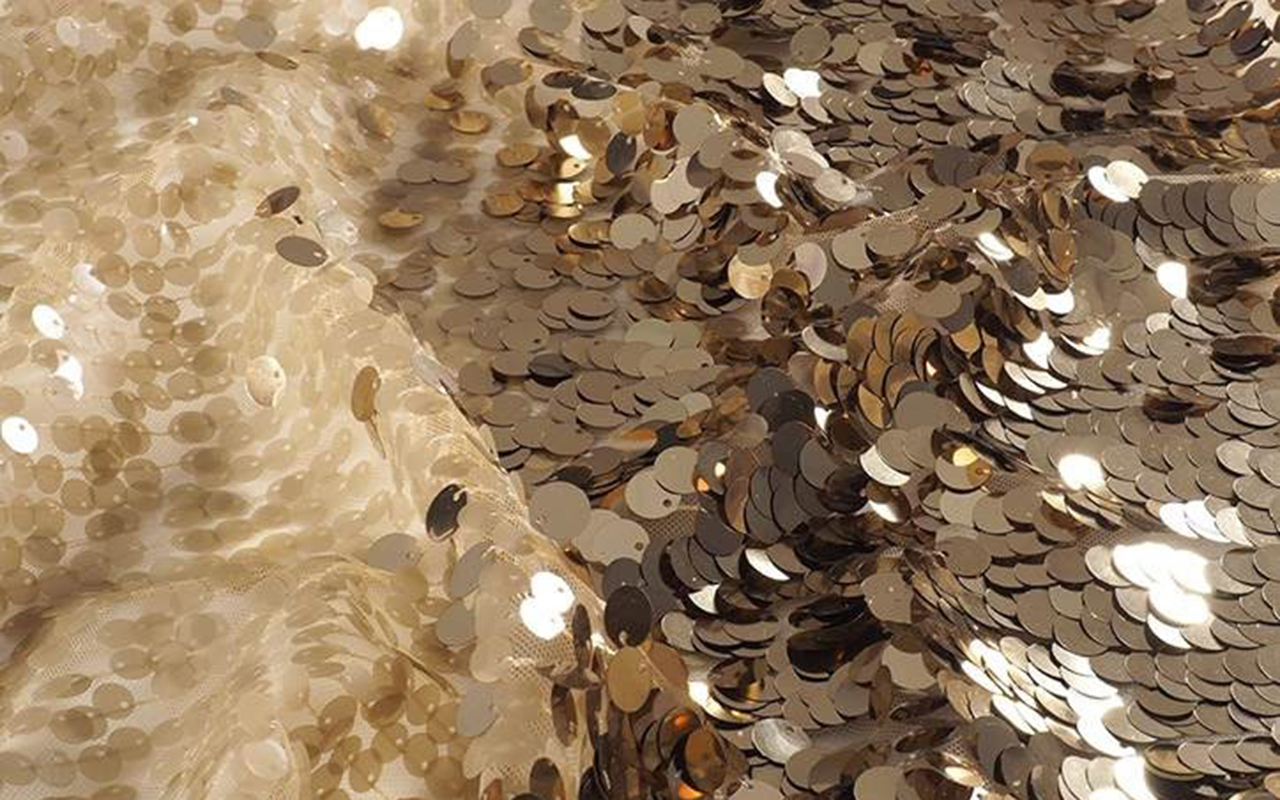
The restless beauty. Josep Font’s work at the Balenciaga Museum
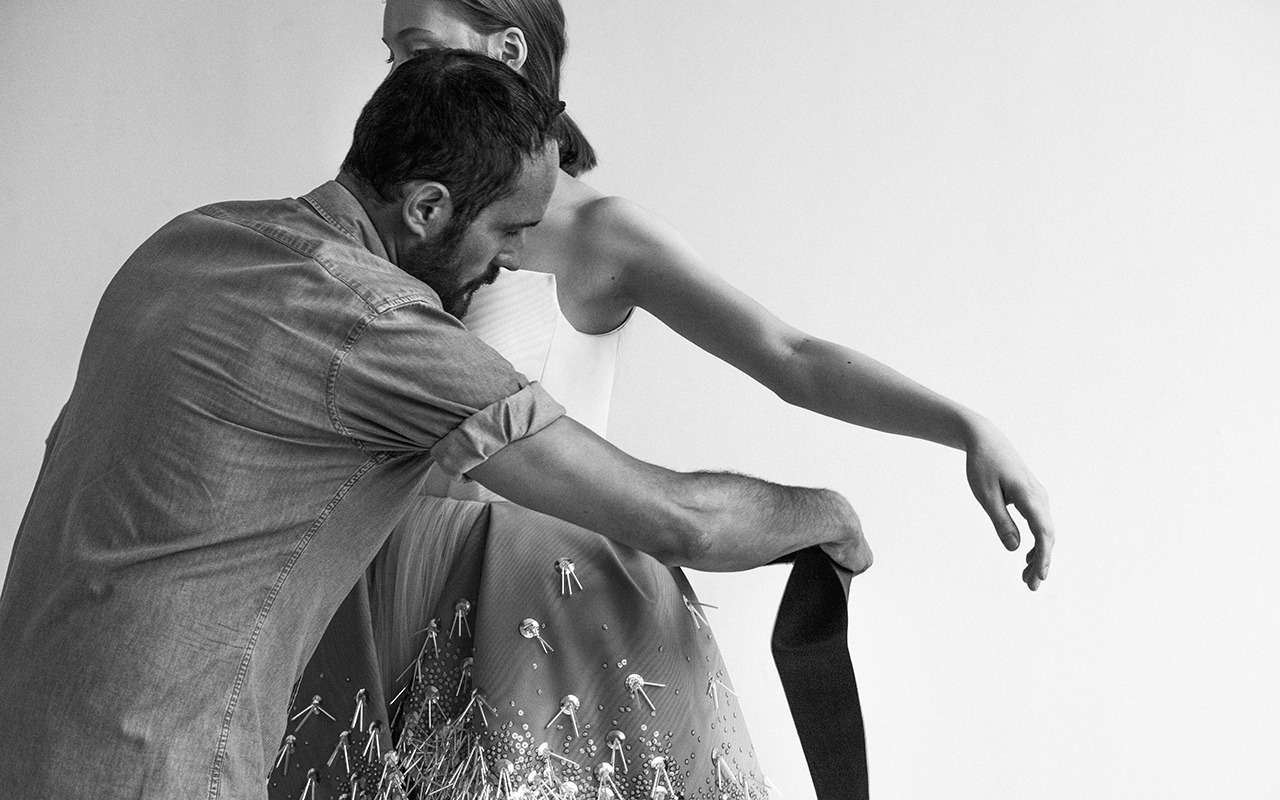 Protrait of Josep Font by Javier Biosca. Museo Cristóbal Balenciaga
Protrait of Josep Font by Javier Biosca. Museo Cristóbal Balenciaga
Josep Font has everything to be a fashion legend -a category that places him in the firmament of needlework stars whose legacy endures over the centuries-. Talented, dreamy, perfectionist and discreet. Unattainable image, architectural soul and persistent work. After spending five years away from the media spotlight once he abandoned the creative direction of DelPozo, a firm that relocated its foundations to relaunch it to international stardom, the Catalan dressmaker is once again in the spotlight. Of course, maintaining its enigmatic aura. It is already known that Josep Font does not like to feed his ego by hitting the headlines.
Now, the Cristóbal Balenciaga Museum dedicates the first retrospective to Josep Font. It will be the first focused on a creative beyond the Getaria maestro in a new cycle that the institution is preparing to show the world how Balenciaga’s talent has influenced the work of international creators on a global level.
The exhibition ‘Josep Font. Beauty and restlessness’, is a production of the Cristóbal Balenciaga Museum, and curated by Josep Casamartina i Parasols – director of the Antoni de Montpalau Foundation , in close collaboration with the creator in which they have worked hand in hand for more than a year so that the result was sophisticated but fleeting, without a millimetre of margin of error and paying homage to the silent luxury that the Catalan creator knows how to print so well in his designs.
And why does Josep Font converse with Cristóbal Balenciaga in the same space? This union was proposed because the look of the Catalan designer towards the Basque couturier has not been mimetic but a very personal interpretation based on the study of the volume treated autonomously and independently of the female anatomy, achieving a sublimated and silent sensuality, as well as Balenciaga understood. Simultaneously, Josep Font achieved great technical perfection and in the simple and at the same time forceful treatment of the fabrics, in the architectural construction and in the use of exquisite embroideries, he is also close to the legacy of the master from Getaria. Perhaps like no other contemporary Spanish designer, Font fits in with Balenciaga’s famous concept: “a couturier must be an architect of form, a painter for colour, a musician for harmony and a philosopher for measure”.
Beauty and restlessness
The name does the thing. The exhibition is articulated through a constant premise throughout the career of Josep Font: “behind beauty there is always restlessness”. The Catalan designer believes that beauty, in all its splendor, produces restlessness and even uneasiness, but perhaps for this reason it also generates the energy to continue reaching for it without stopping. The architectural construction, the combination of volumes and the ornamentation of the fabrics are hallmarks of his work. Without forgetting his incessant search for a very personal and constantly evolving feminine ideal, far from stridency and provocations. Josep Font’s style is elegant, refined, but also hypersensitive and ethereal. Based on this idea, the exhibition proposes an agile aesthetic discourse that chronologically reviews the 30-year career, from the beginnings on the catwalks of Gaudí and Cibeles through the fashion shows in Paris, haute couture and finally at the head of Delpozo, the pinnacle of his career. It is made up of 54 pieces of clothing, including coats, street, cocktail, night and bridal outfits; from the Fundació Antoni de Montpalau -which has the main collection of pieces by the Catalan designer- and from various private Spanish and North American collections. The set also brings together some accessories from the two brands, such as shoes, perfumes and headdresses. Beyond the creations, the tour includes emblematic photographs by Joseph Hunwick , Javier Biosca and Ernesto Artillo , as well as an interview with the creator by the Victoria & Albert Museum in London.
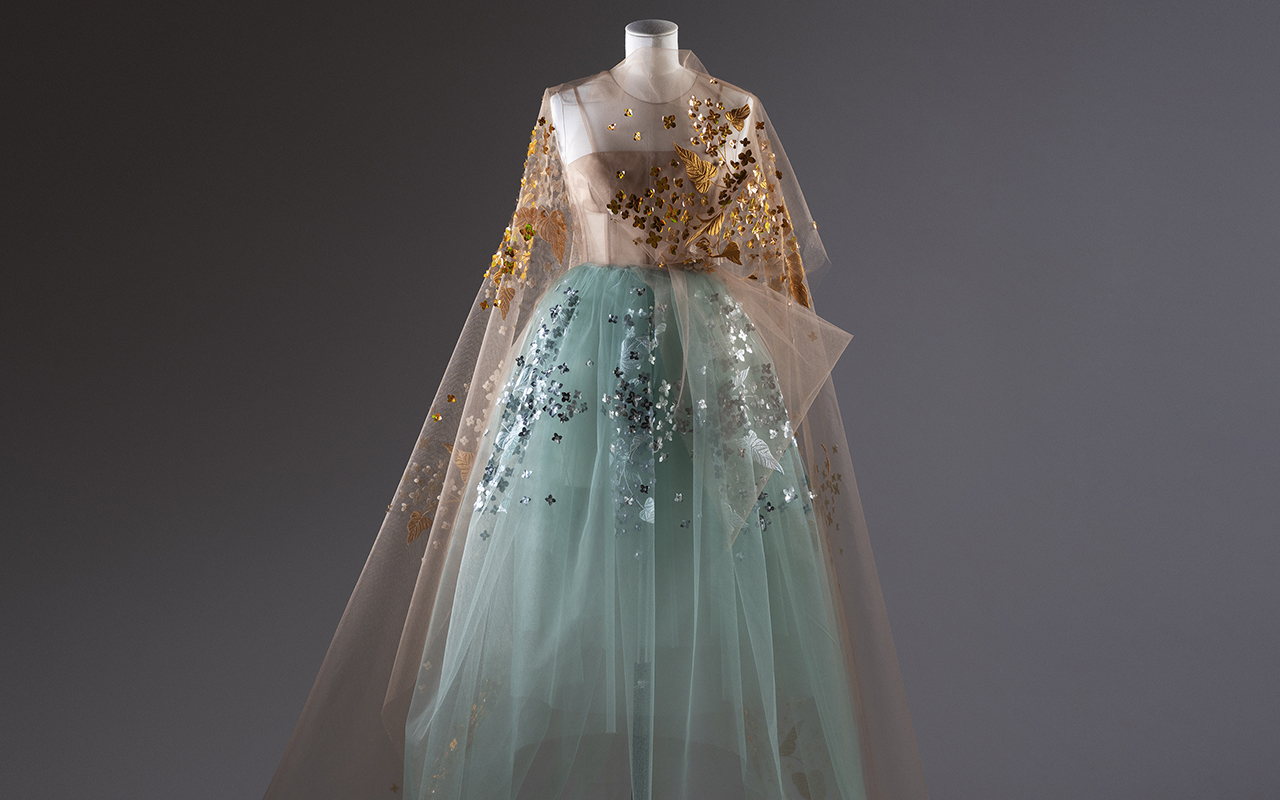 Dress Delpozo. Pic: Alex Iturralde. Museo Cristóbal Balenciaga
Dress Delpozo. Pic: Alex Iturralde. Museo Cristóbal Balenciaga
This anthology especially embraces the work of Font carried out in the first two decades of the 21st century and is structured through three major key periods:
From the beginnings to the consolidation
Josep Font (Santa Perpètua de Mogoda, 1965) studied Architecture at the Polytechnic University of Catalonia and graduated in Fashion Design from the Escola de Disseny i Moda Felicidad Duce, in Barcelona. At the age of 21, he won the Air France Mode Prix award and exhibited at Les Arts Décoratifs . The young designer consolidated his own brand with Luz Díaz in 1987, although they had already enjoyed good recognition in the fashion world for years. Together they created their own language. An aesthetic of sober, austere and refined colours. His inspiration was born from everyday popular clothing, with the use of natural materials, silk, wool and cotton, and a studied and severe pattern. However, in 1995, Font decided to pursue his solo career and at the end of this decade he evolved into a magical and hypersensitive world, with broader colours, luxurious and refined fabrics, spectacular and daring embroideries. This turn in design allowed it to achieve international success in the early 2000s. Years of expansion, awards, shops and parades arrived in Madrid, Barcelona and Tokyo. An ascending process that culminated in three prêt-à-porter collections presented in Paris and four other haute couture collections that were absolutely successful in the French capital.
Delpozo ‘s relaunch
There was a bump in this rise to the top: Josep Font lost his own label in 2011, although for a year, the talented creator began designing anonymously for other firms. However, one offer particularly excited him: the commission to remodel and relaunch the firm of the late Madrid designer Jesús del Pozo. Font re-founded the pillars of the brand with a new name – it would be called DelPozo – and an updated structure and workshops in Madrid, Miami, London, Moscow and Dubai . In the new DelPozo collections , it was appreciated what Josep Font had started in haute couture and would create a new line called impeccable prêt -à- couture , with a rigorous technique and exquisite finishes. Very Josep Font style.
Maturity and international recognition
Josep Font reached his zenith in his stage for Delpozo. Between 2012-2018 he created 19 collections and it is in this full production that the influence of Cristóbal Balenciaga will be most evident. In Delpozo, the Catalan designer will reach his maturity and maximum recognition worldwide through the collections he presented in Madrid, New York, Paris and London, and placed the brand among the favorites of the red carpet and celebrities such as Care Blanchett, Julianne Moore, Keira Knightley or Zendaya , creating trends and marking a milestone in the world of fashion. In fact, Josep Font became the first Spanish designer invited by Anna Wintour to the Met Gala . An anniversary that shows the deep admiration felt by the main fashion gurus for the work of this prodigy with the needle.
Little is told about the last stage of Josep Font. He abruptly left Delpozo when he “fell out of love with the project.” Just like Balenciaga did in 1968, who preferred to leave everything when he saw that his idea of design had nothing to do with the democratization of fashion at the time-if he raised his head right now, we don’t know what he would think of his own brand-. Until then, Josep Font has continued working from the most absolute anonymity and time will tell if he will return to the media spotlight with a new resurgence of himself. Now for the moment, his applauded talent comes to light again in this fantastic exhibition that can be visited until January 7, 2024 at the Cristóbal Balenciaga Museum. A magnificent alliance between fashion, architecture, coherence and integrity.
Exhibition ‘Josep Font. Beauty and restlessness’ Pics: Ernest Artillo y Alex Iturralde. Museo Cristóbal Balenciaga
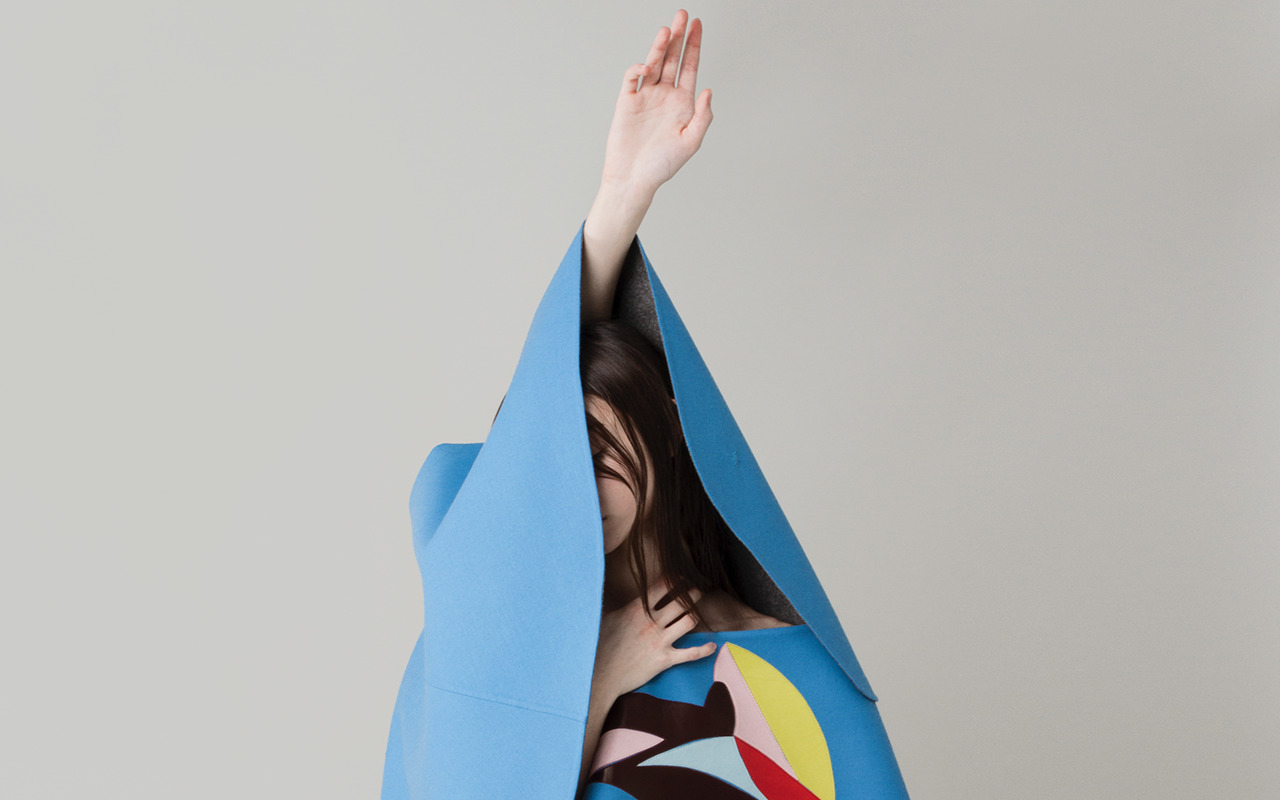
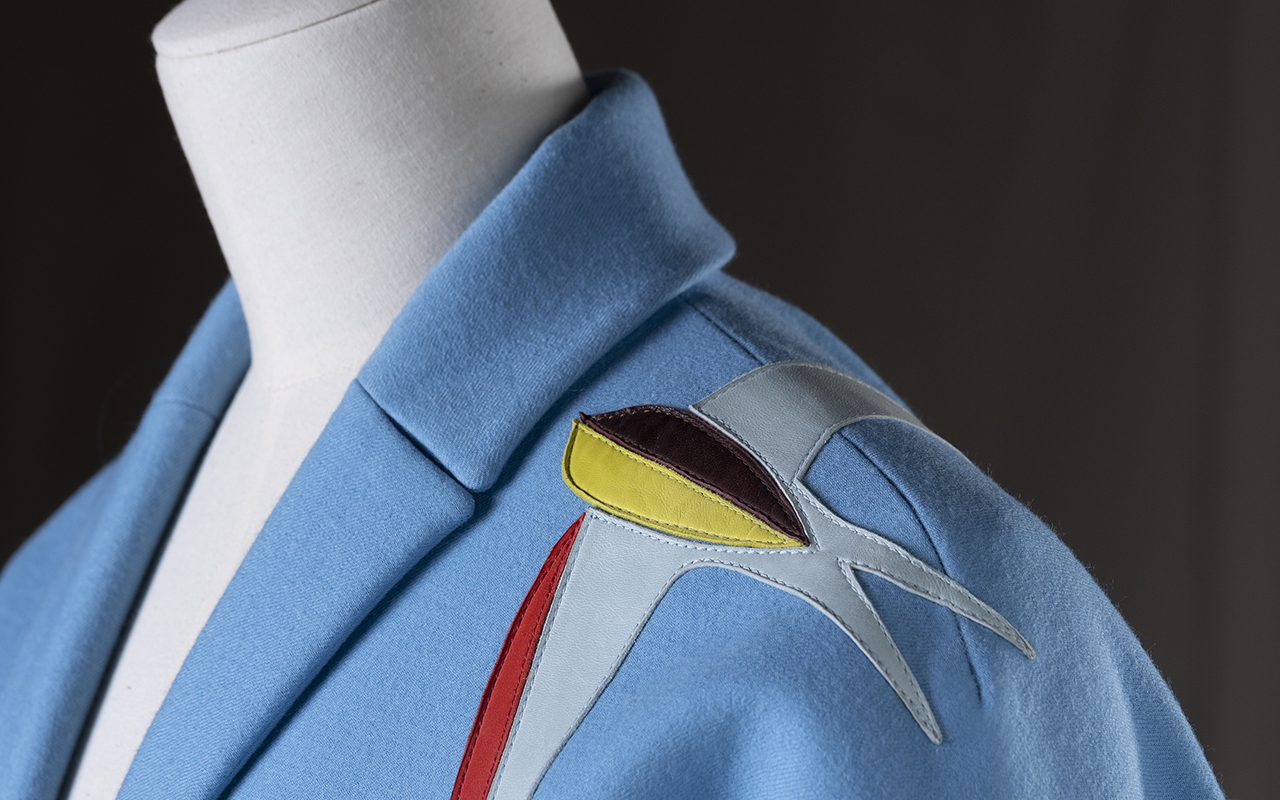
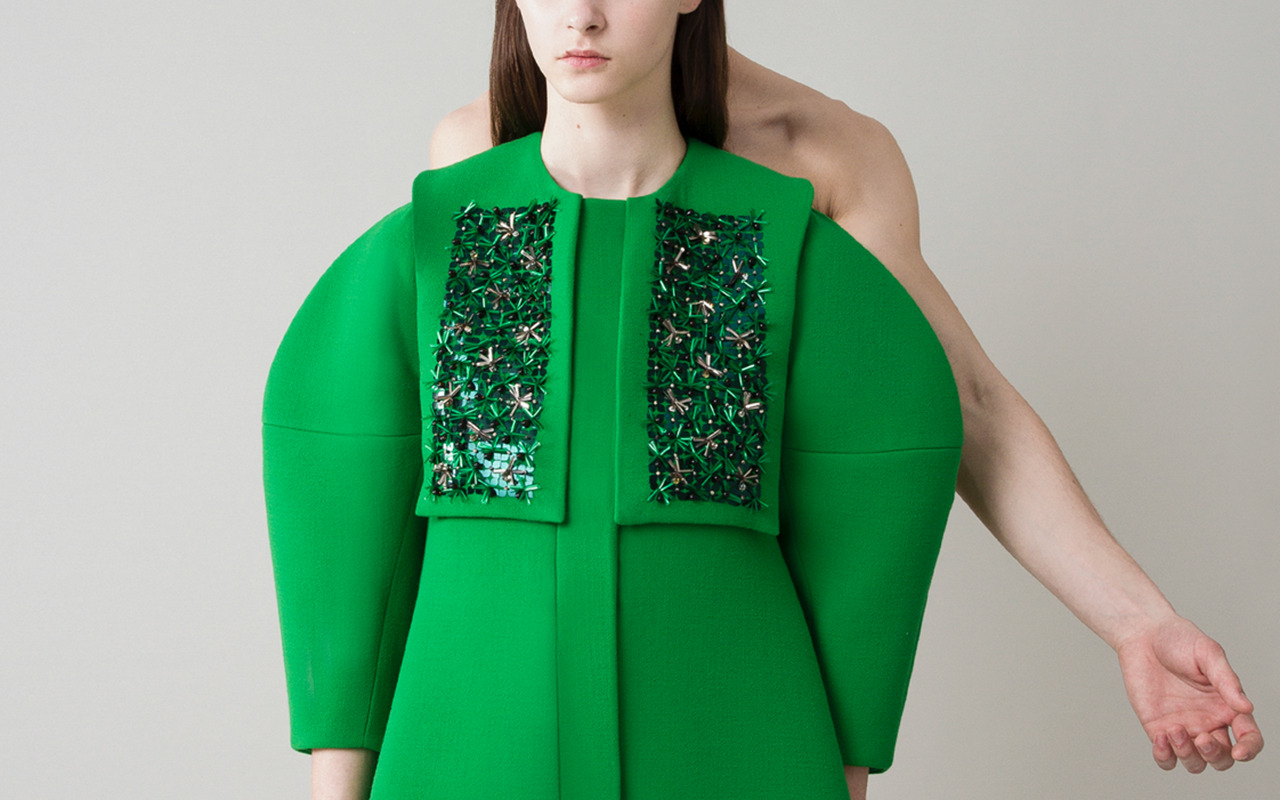
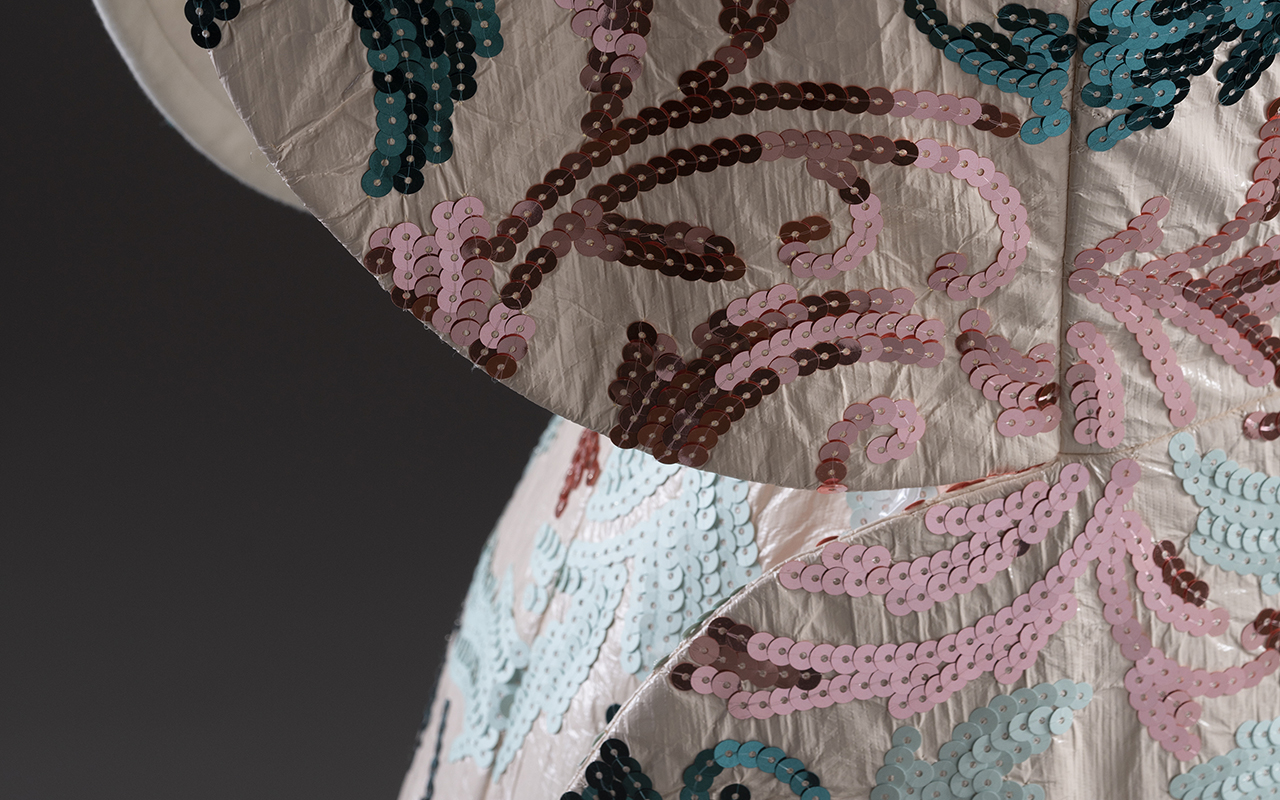
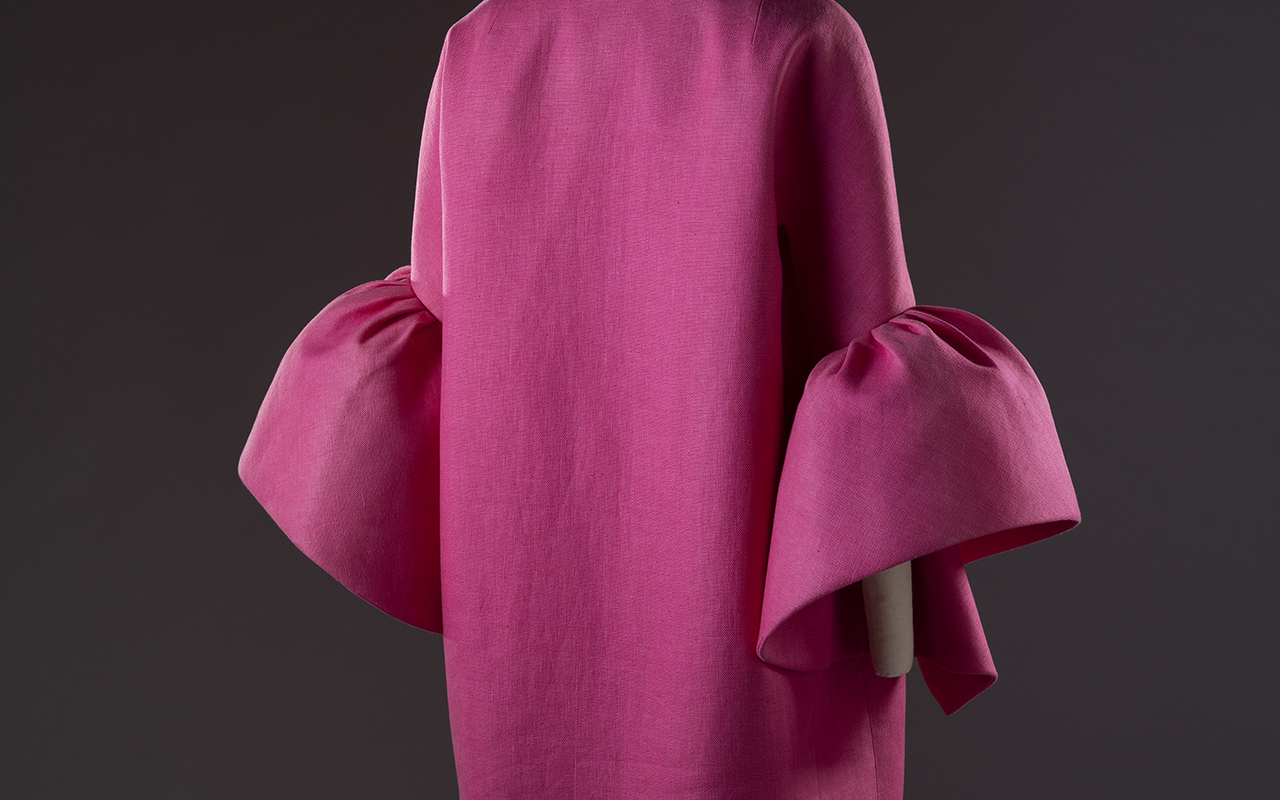
(Español) Adiós a José Castro, un diseñador muy querido en Gratacós
Mushrooms conquer fashion and expand without limits
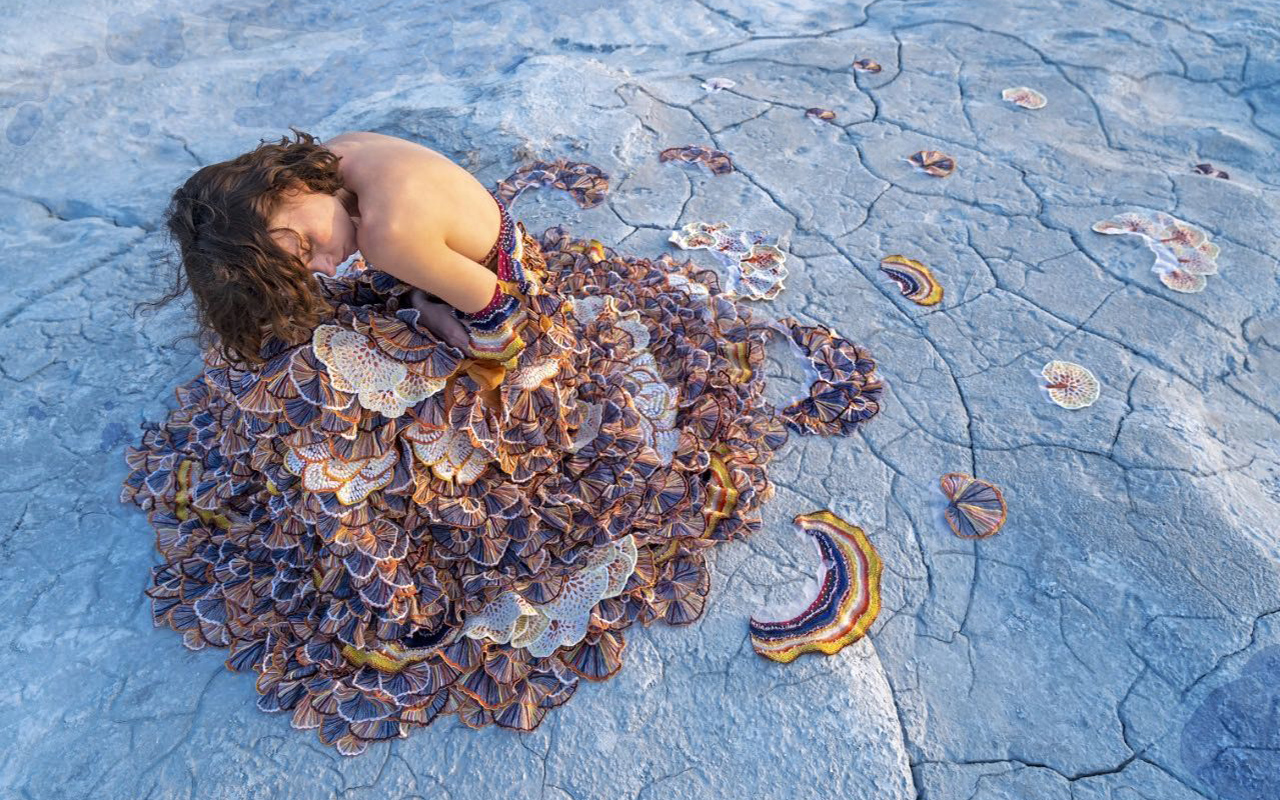 Rahul Mishra’s design from the collection “The Dawn.” Photo: Facebook
Rahul Mishra’s design from the collection “The Dawn.” Photo: Facebook
Inspiration always comes from the most unexpected places, especially in the demanding world of fashion, which is always looking for new things to surprise its consumers with. For some time now, there has been a new object of desire that generates fascination and repulsion in equal parts: mold. Yes, you read that right. Mold, that type of microscopic fungus that helps nature break down dead organic matter, is all the rage for a number of reasons.
This statement is not surprising, because in general, the world of mushrooms seduces with its imperfect aesthetics. It does so through organic forms and natural reliefs that inspire artists and creators. It also connects with a dreamlike and fantastic universe that we carry in the subconscious and that can be revealed in the form of adventures in the forest, as can be seen in books like ‘Alice in Wonderland’ or movies like Disney’s ‘Fantasy’. Mushrooms also refer to the psychedelic fever of the 1960s and 1970s, with their hallucinogenic properties that were transmitted in colourful universes that permeated everything from fashion to music and painting.
Finally, the world of mushrooms also has a sustainable dimension. Thanks to their amazing properties and exceptional versatility, mushrooms have transformed the world of fashion by offering a more conscious and environmentally friendly alternative. We analyze each aspect below:
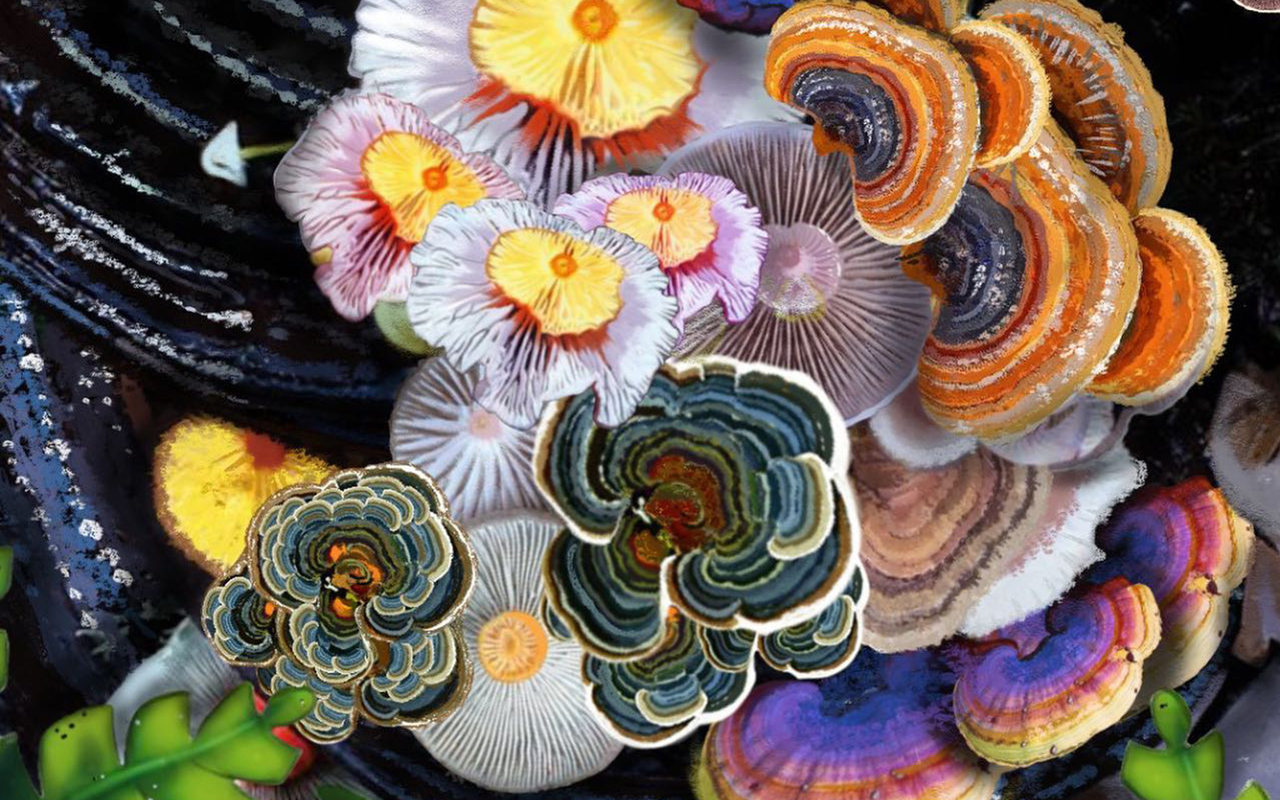 Rahul Mishra’s design inspired by mushrooms from the collection “The Dawn.” Photo: Facebook.
Rahul Mishra’s design inspired by mushrooms from the collection “The Dawn.” Photo: Facebook.
Imperfect beauty
It’s self-evident: mold, at first glance, can seem repulsive and unsightly. However, fashion designers have found in this unattractive organism a hidden beauty that manifests itself in its pastel colours, its organic reliefs and its unusual textures. These unusual and unique attributes endow you with a certain aesthetic uniqueness and, therefore, a greater ability to challenge traditional canons of beauty. In a world that seeks perfection, the beauty found in the abstraction of mold becomes a bold and liberating statement, instantly captivating because it connects with nature and the processes of life in an organism that questions and explores ideas about what it is beautiful and good, and tries to reconcile us with imperfection.
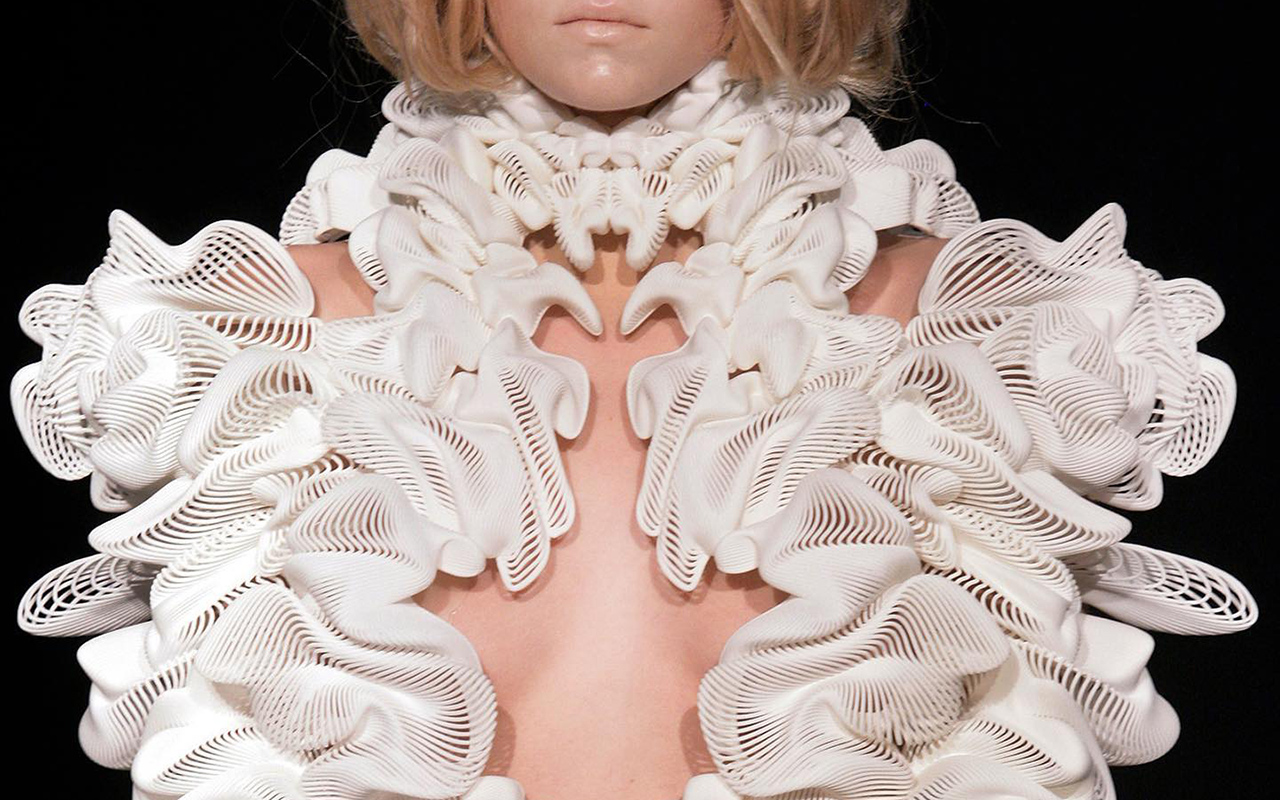 An architectural design by Iris Van Herpen. Photo: Facebook
An architectural design by Iris Van Herpen. Photo: Facebook
In the crosshairs of avant-garde designers
Fashion designers have embraced the innovative aesthetic of fungal materials, creating cutting-edge pieces that push the limits of creativity. Thus, the abstract patterns and irregular, velvety patches of mold have been translated into striking prints and embroidery on garments. Various designers have experimented with dyeing and printing techniques to create mold-like effects in their collections. In addition, the organic shapes of the mold have influenced the silhouettes and cuts of the garments, providing a sensation of fluidity and movement.
For example, Iris van Herpen has explored mold reliefs in her creations on numerous occasions, as well as the underground network and connections of fungi. Her experimental designs often feature three-dimensional structures that mimic the unique shapes and textures of these small, highly regenerative organisms.
For his part, Rahul Mishra also stands out for his sustainable approach and his use of artisan techniques. In his collections, the Indian designer has incorporated embroidery and appliqués that evoke mold relief, creating interesting visual effects and surprising textures. Known for his edgy aesthetic, Alexander McQueen has explored the world of mold in his iconic “Plato’s Atlantis” collection. The organic reliefs of the mold were translated into prints and textures on her garments, providing a sense of mystery and surrealism. Gareth Pugh has also turned to mold for inspiration, creating garments with volumes and textures that evoke his distinctive aesthetic. In addition, the French designer Marine Serre has incorporated mold into patterns and textures in garments with a futuristic and avant-garde aesthetic.
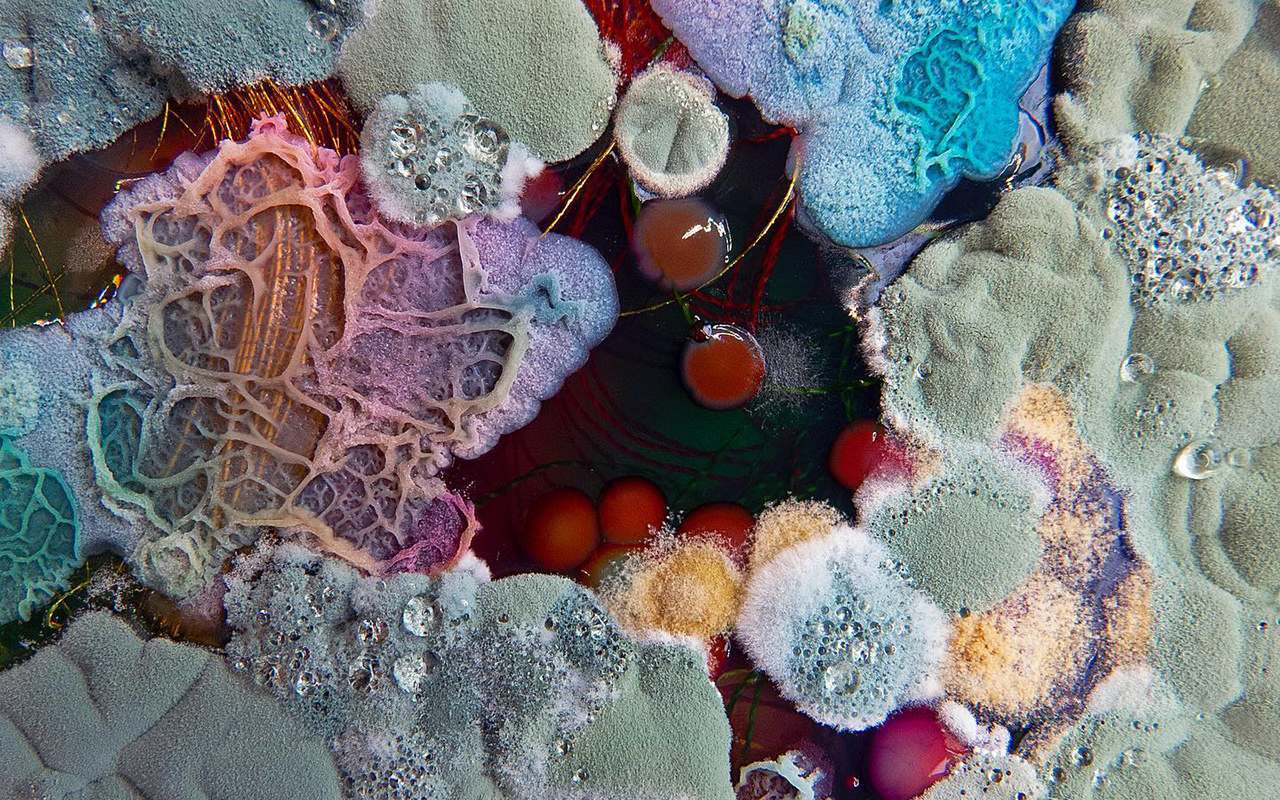 The artist Dasha Plesen works with microbiology. Photo:Facebook
The artist Dasha Plesen works with microbiology. Photo:Facebook
Applications in the beauty industry
In the beauty industry, which is always on the lookout for new trends, mushrooms have also emerged as a powerful source of inspiration and have, in turn, become active elements in beauty products, thanks to their incredible versatility and skin benefits.
Cosmetics has been one of the fields most impacted by the incursion of fungi. These organisms have moisturizing, antioxidant, anti-inflammatory, and regenerative properties, making them star ingredients in skin care products. Mushrooms, such as reishi, shiitake, and cordyceps, are used in serums, creams, and masks to provide noticeable benefits, including improving skin elasticity, reducing signs of aging, and promoting a radiant complexion.
In addition to their benefits for the skin, mushrooms have also made their mark in the world of perfumery. Some species, such as truffles and mushrooms, have characteristic and sophisticated aromas that have been used to create distinctive notes in perfumes and fragrances. These fungal ingredients bring a unique, earthy dimension to olfactory compositions, adding a sense of mystery and elegance to scented products.
The influence of these tiny living organisms has also extended into the world of creative makeup, where designers and brands have found inspiration in the hues and textures found in nature’s mushrooms. Eyeshadow palettes inspired by warm, earthy tones, nail polishes that mimic the subtle colours of wild variants, and makeup products with velvety textures that resemble mold reliefs are the order of the day.
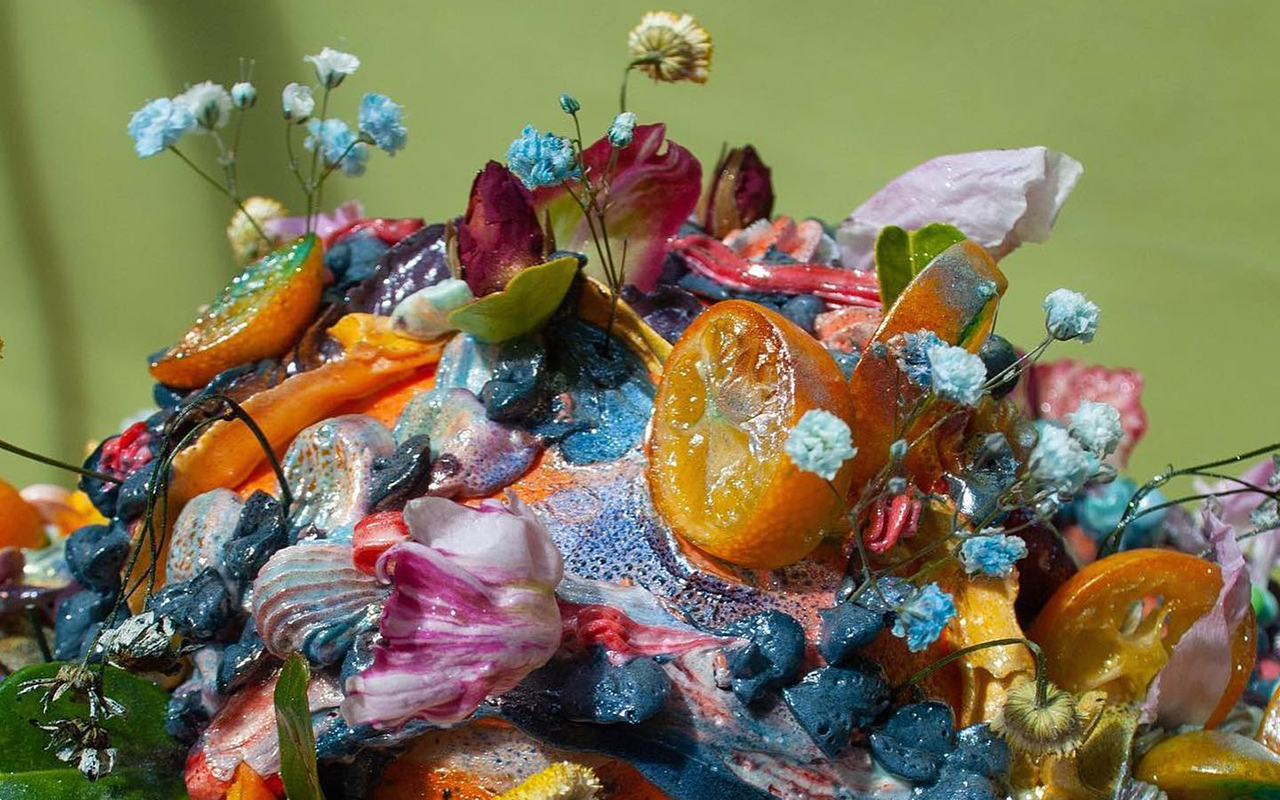 An artistic creation by the pastry company Frostedhag. Foto: Facebook
An artistic creation by the pastry company Frostedhag. Foto: Facebook
A sustainable revolution
Mushrooms offer an ethical and sustainable alternative to animal leather, as they can be grown under controlled conditions and without harming the animals. Being a renewable and biodegradable source, materials of fungal origin reduce the environmental footprint of fashion, without sacrificing luxury or quality. Materials derived from mushrooms possess unique properties that make them ideal for use in clothing. The mycelium, the fungus’ network of filaments, can be grown and manipulated to create a variety of textures, densities, and colours. Additionally, these materials are lightweight, flexible, waterproof, and breathable, making them a versatile and comfortable option for garments, accessories such as bags, and footwear.
One of the pioneers in introducing the fungal world into her creations has been Stella McCartney, who has incorporated a bag made with Mylo, a leather-like material made from mushroom roots. Later, she launched a sports outfit made from this material. But it was not the only one. Firms such as Adidas or Hermès have also begun to use biodegradable materials made with fungi that are transformed into sustainable fabrics, standing out for their softness and flexibility, offering a more conscious and environmentally friendly alternative. In addition, the ability of fungi to degrade naturally at the end of their useful life contributes to closing the materials cycle and reducing environmental impact.
For all these reasons, the mushroom revolution has only just begun and these organisms are part of the sustainable change that is taking place throughout the world of fashion. As the sector moves towards a more ethical and environmentally friendly industry, mushrooms are making a lasting mark as an innovative and promising alternative.
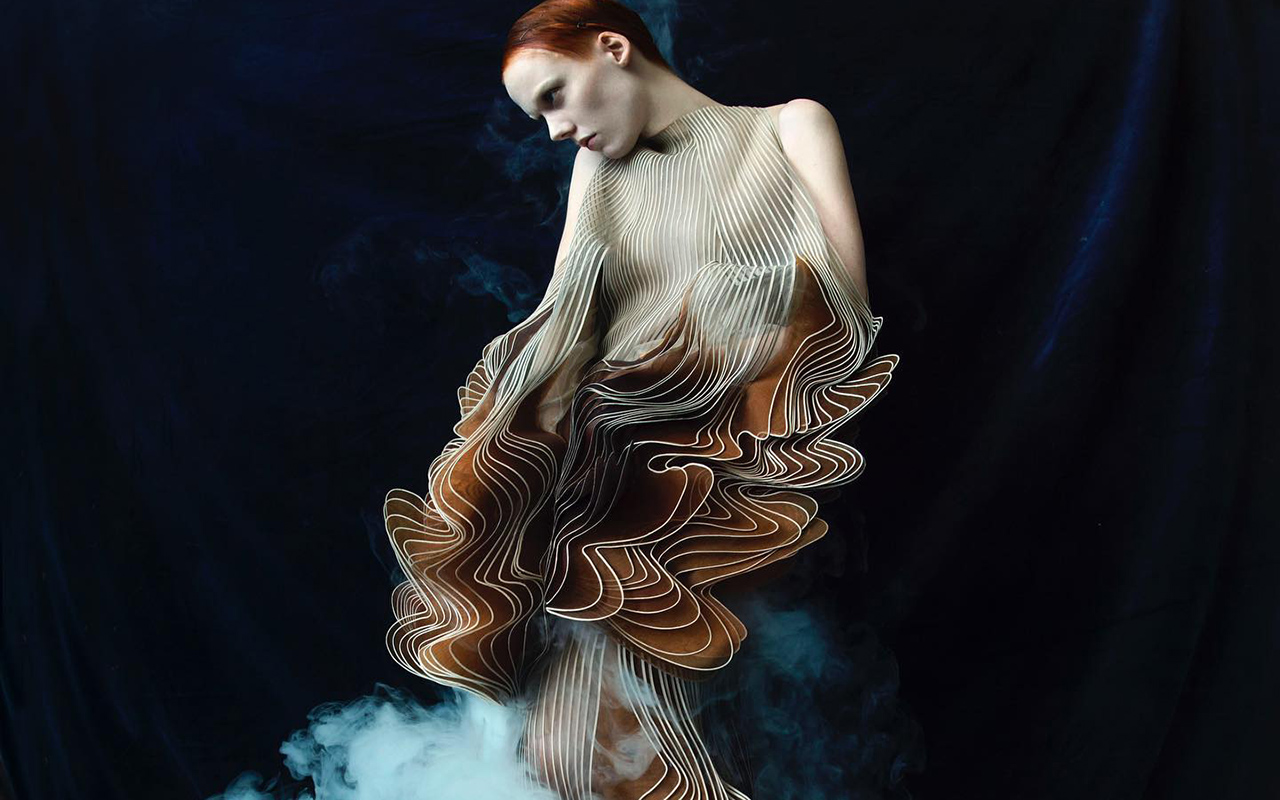
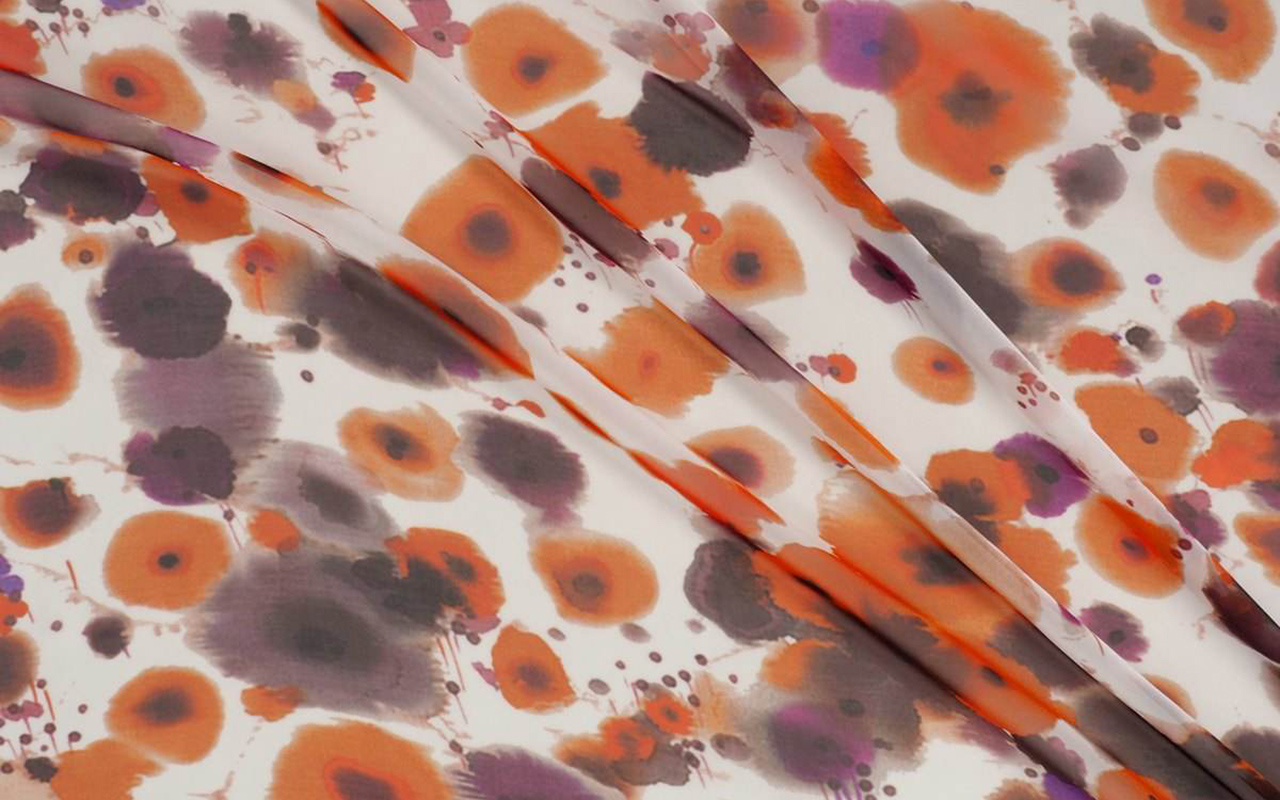
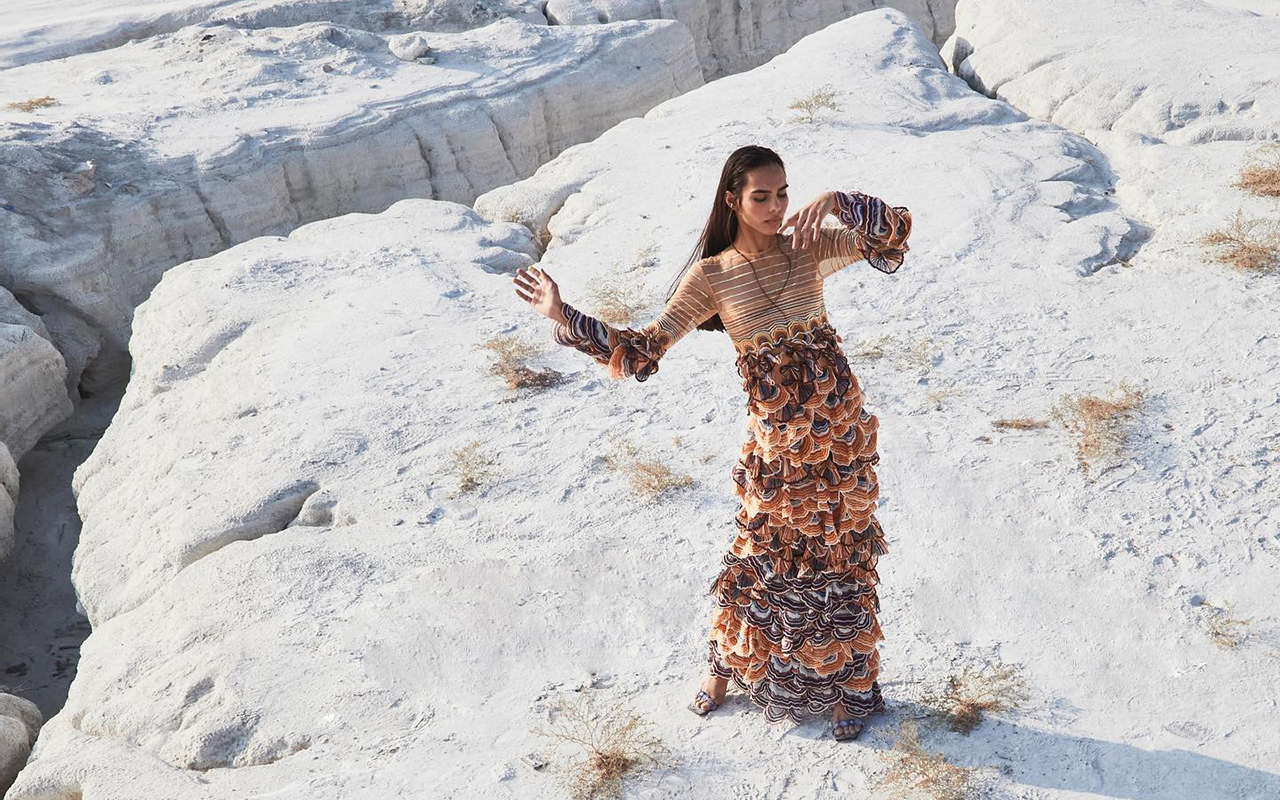
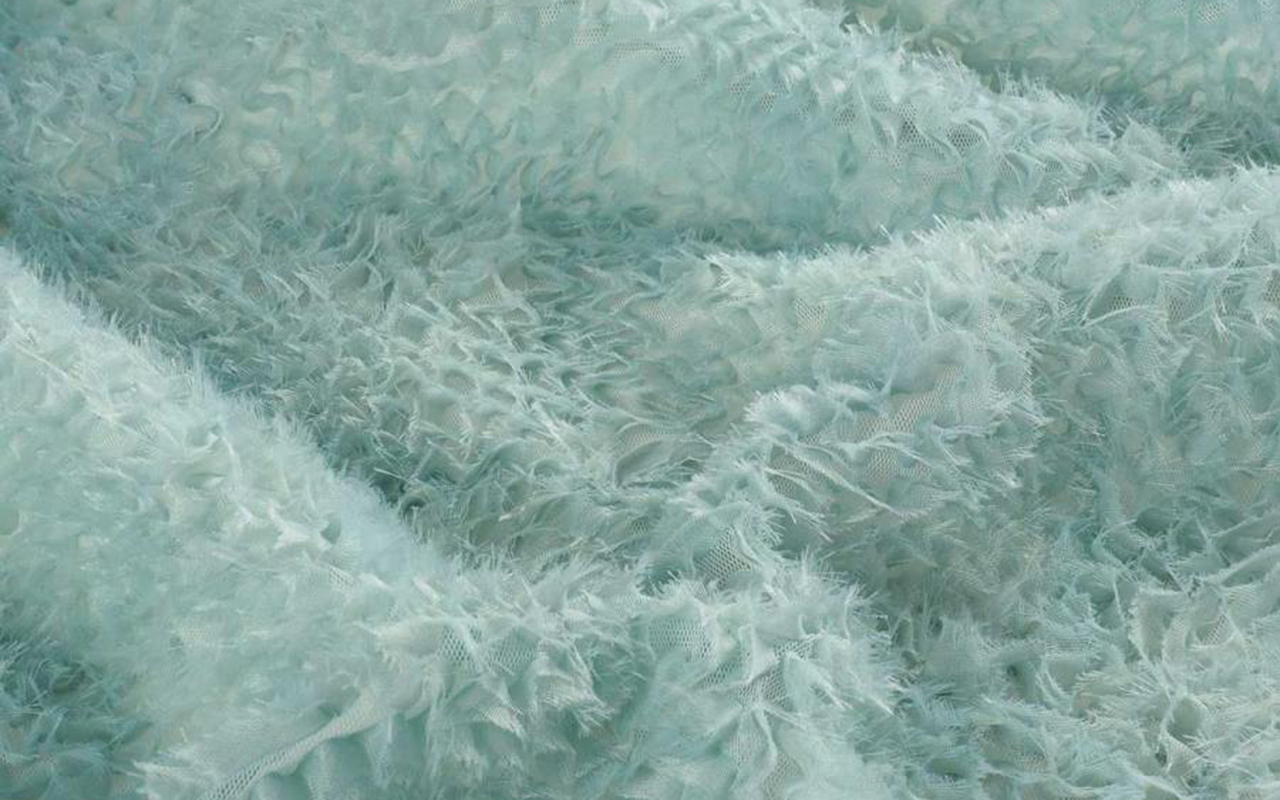
The Pirelli calendar now portrays the beauty of the empowered woman
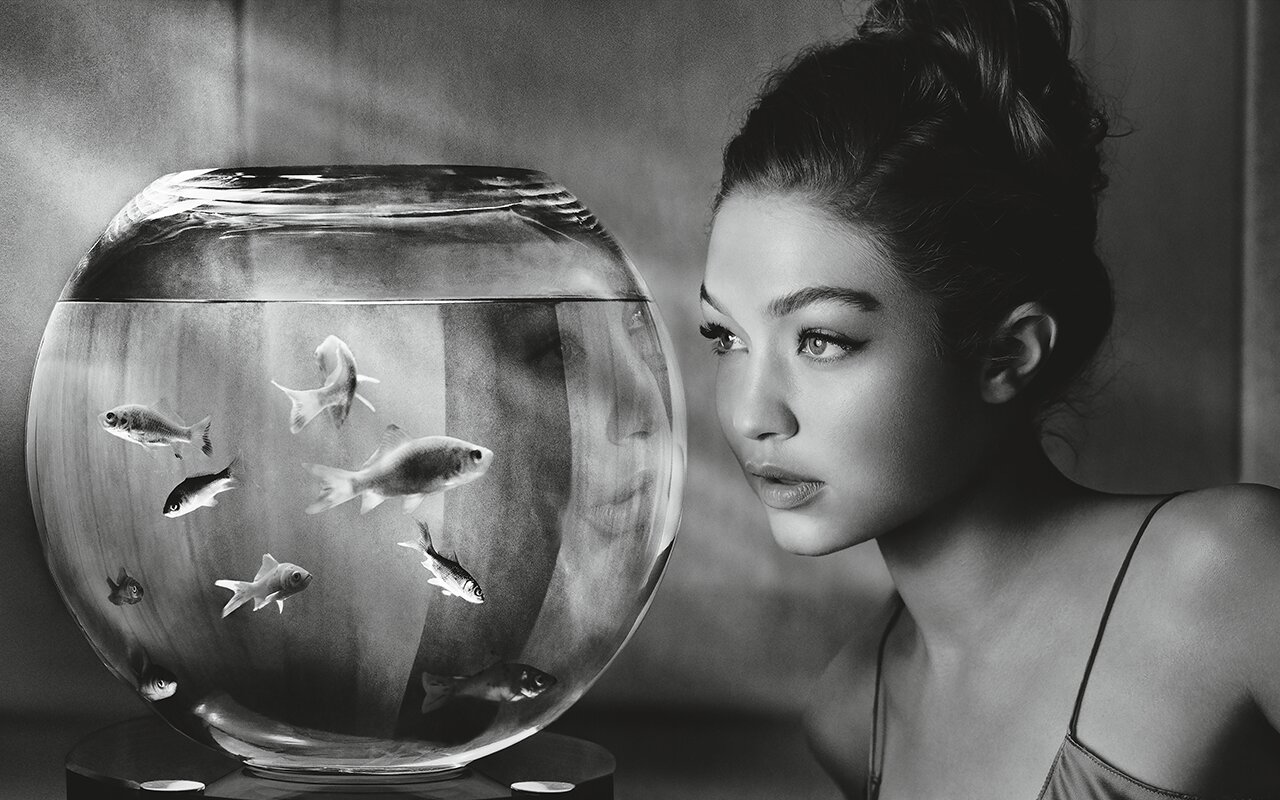 Photos: Pirelli / FotoNostrum Barcelona
Photos: Pirelli / FotoNostrum Barcelona
Feminine beauty has undergone a historical change in its conception and representation over time, and especially in the last half century. If we talk about beauty portrayed, the famous Pirelli calendar has become a tangible reflection of this transformation, being an everyday object that has played an important role in the representation of women in the world of fashion and photography.
Known for its iconic and sensual images that decorated mechanical workshops, garages and truck cabins in its early days, the Pirelli calendar has evolved over time to reflect social and cultural changes in the perception of femininity and the empowerment of women. . Now, the FotoNostrum gallery in Barcelona exposes this evolution by presenting the largest retrospective ever held of the iconic almanac of the renowned tyre company.
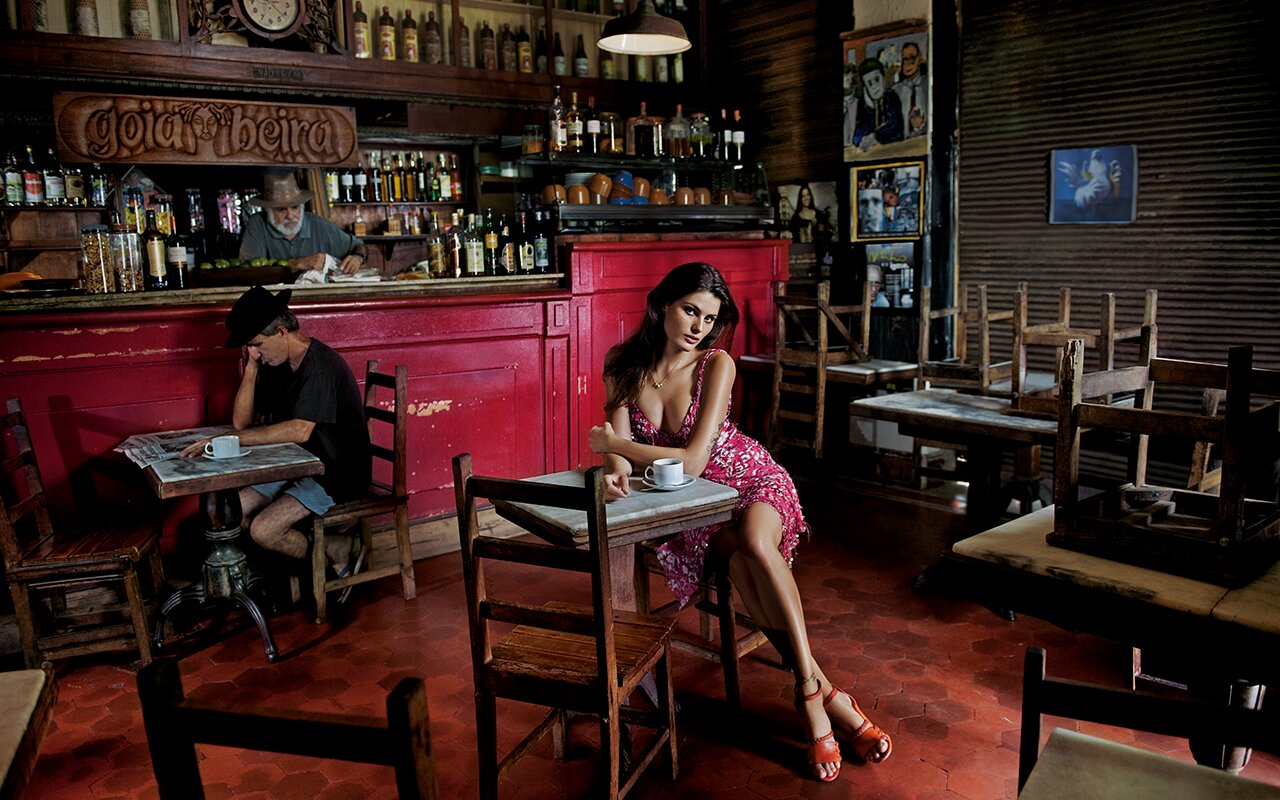
Beauty narrated by the best photographers
Under the title of ‘ L’Eterna Bellezza ‘, the exhibition exhibits more than 450 snapshots captured by 41 masters of fashion photography, who have contributed to making the Pirelli Calendar a legend in the world of photographic art. Masters like Peter Lindbergh, Annie Leibovitz, Helmut Newton, Herb Ritts , Paolo Roversi , Mario Testino , Steve McCurry, Bruce Weber, Patrick Demarchelier and Richard Avedon , among others, have portrayed over the years the sensuality of women, including models such as Gisele Bündchen , Naomi Campbell, Cindy Crawford, Gigi Hadid and Kate Moss; actresses like Monica Bellucci, Sofia Loren, Laetitia Casta, Jessica Chastain , Penélope Cruz, Uma Thurman , Kate Winslet , and Robin Wright, and singers like Cher, Rosalía, and Patti Smith.
Beyond the sensuality that becomes evident in some cases through the nakedness of the body, what draws attention in the exhibition is the change in gaze. In this sense, ‘ L’Eterna Bellezza ‘, protected by Amadeo M. Turello , Italian curator and preserver of the Pirelli Collection since 2015, has not wanted to ignore all the stages of the Pirelli calendar, from its beginnings in 1964 to 2022, through images that show everything from nudes where the The models’ bodies are presented explicitly as an advertising claim, as well as other more evocative images with messages of vindication of feminine power, which go beyond mere eroticism.
The images shown not only reveal the poetics of individual authors on the female body, they also constitute a reflection of society, aesthetics and the arts in the last 60 years. Thus, the exhibition reflects how the photographic language has evolved over time, highlighting other aspects such as fashion and pop culture of each era.
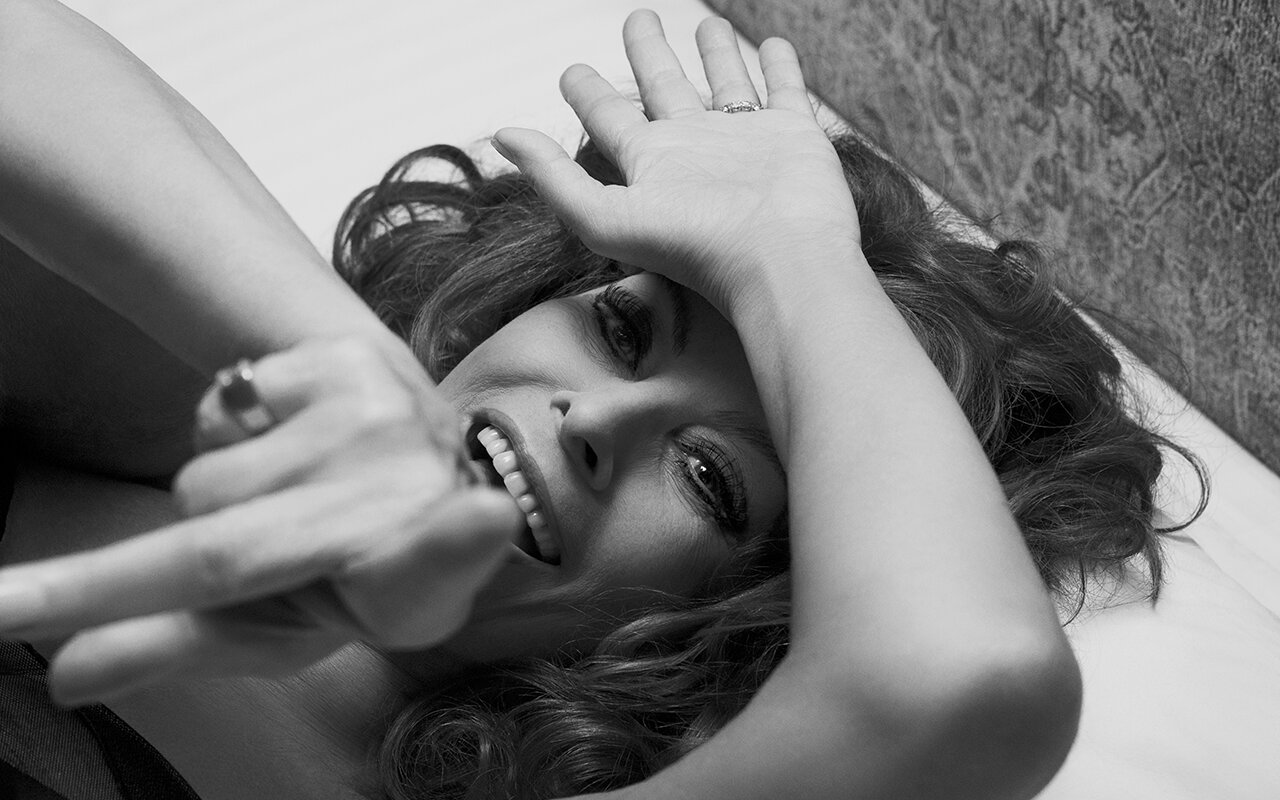
From object to subject
The Pirelli calendar was first launched in 1964 and has become a symbol of beauty, style and elegance. A leading photographer on the London scene, Robert Freeman, who was a personal friend of The Beatles, was commissioned to create a “beautiful calendar” and had complete creative freedom to do so. This talented photographer selected representative models of the time and took them to the beaches of Mallorca for a cheerful and informal shoot that captured the essence of that moment marked by an emerging counterculture and the sexual revolution.
At that time, calendars with images of women already existed and were used as a marketing tool in the automotive industry. Pirelli wanted to give his celebrated almanac a more sophisticated image and, in his quest for good taste, partnered early on with leading photographers of each era to provide their artistic vision of female beauty. The first calendars caused a sensation, but despite the change, they still reflected old stereotypes: women in pin-up poses displayed their bodies as objects of desire.
As time progressed, Pirelli changed its approach and adapted to the new changes, celebrating values such as diversity, talent, individualism and authenticity to portray a beauty that goes beyond the purely aesthetic and focuses on the personality and the way of being of the woman. In the 21st century, the Pirelli calendar has challenged traditional beauty canons and has captured the essence of successful women in various fields, such as music, cinema, fashion, sports and activism, promoting a more inclusive and empowered vision. of women in society.
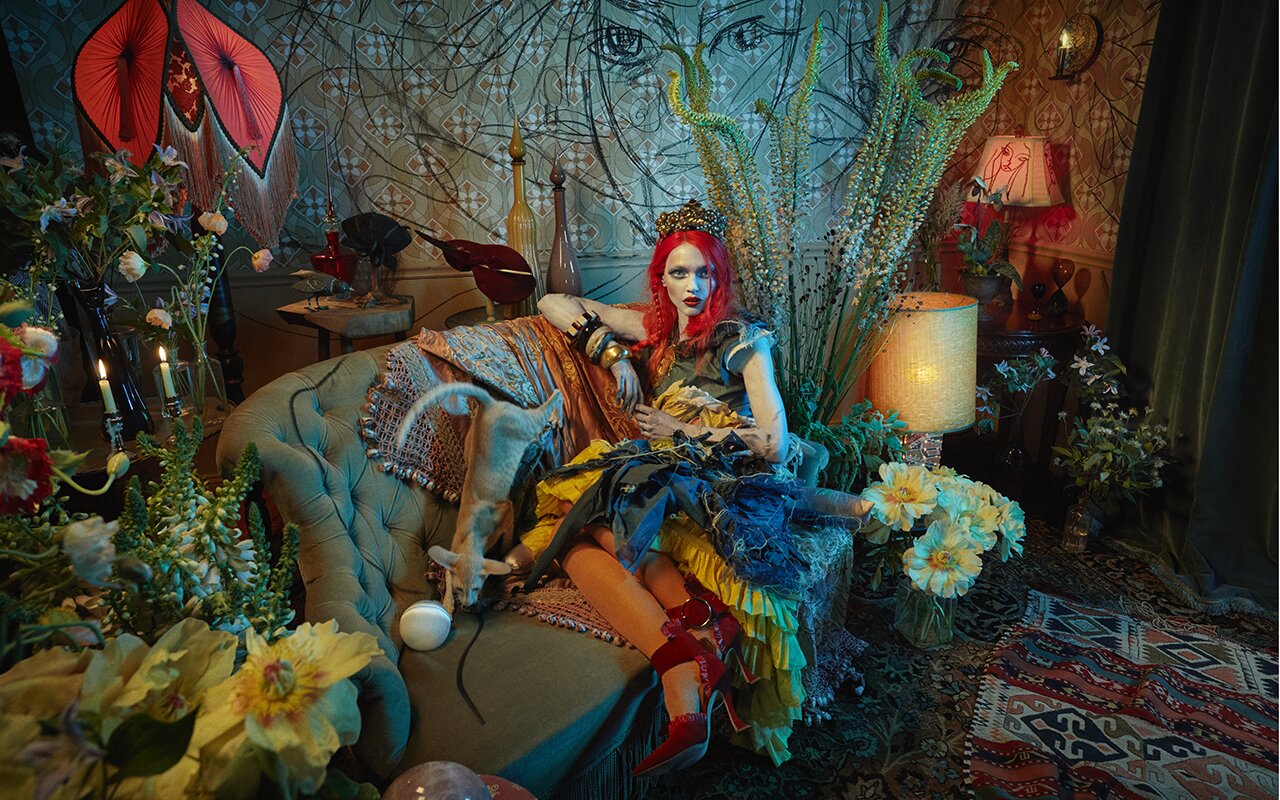
The woman also as creator
Women are the absolute protagonists in the history of the Pirelli calendar, but they have not always been in the spotlight. The tyre brand has highlighted the role of women as creators and protagonists in the world of fashion and photography, providing a platform for female photographers to express their artistic vision and talent. This has been demonstrated by photographers such as Sarah Moon, Joyce Tenneson and Annie Leibovitz, who has worked twice for Pirelli.
The latest signing for the creation of the famous calendar has been Emma Summerton , who has been inspired by the classic figure of the muse to vindicate the role of women as creators. For the Australian photographer, the conception of beauty transcends faces and bodies, and has given the models participating in the calendar, such as Bella Hadid, Cara Delevingne or Ashley Graham, an artistic role linked to the power they represent in life real. Thus, in a dreamlike setting with a great charge of fantasy and ornamental precision, the ” Summerton muses ” are presented as authentic warriors, queens, activists or writers in the 2023 edition of the Pirelli calendar.
Precisely, some of these fresh new images can also be seen in the retrospective of the Pirelli calendar, which will be open to the public until the 30th July at the FotoNostrum gallery in Barcelona.
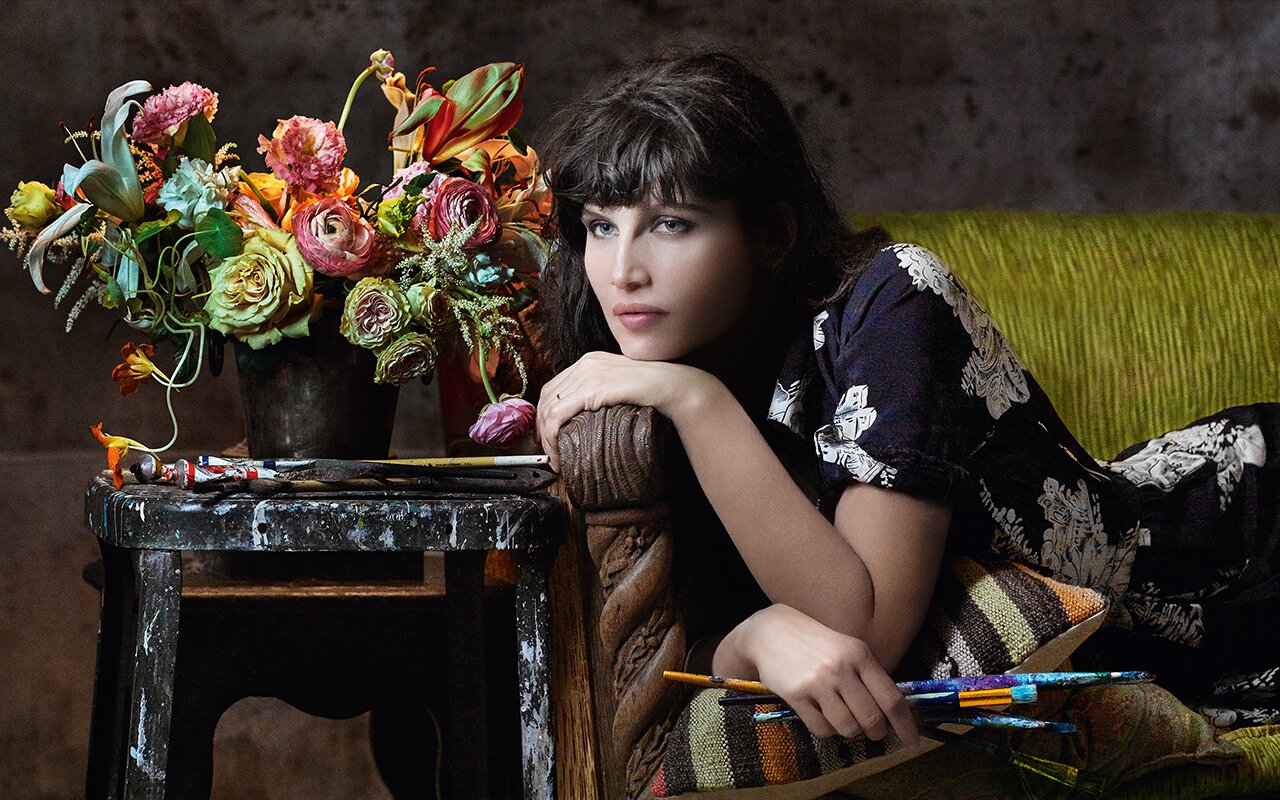
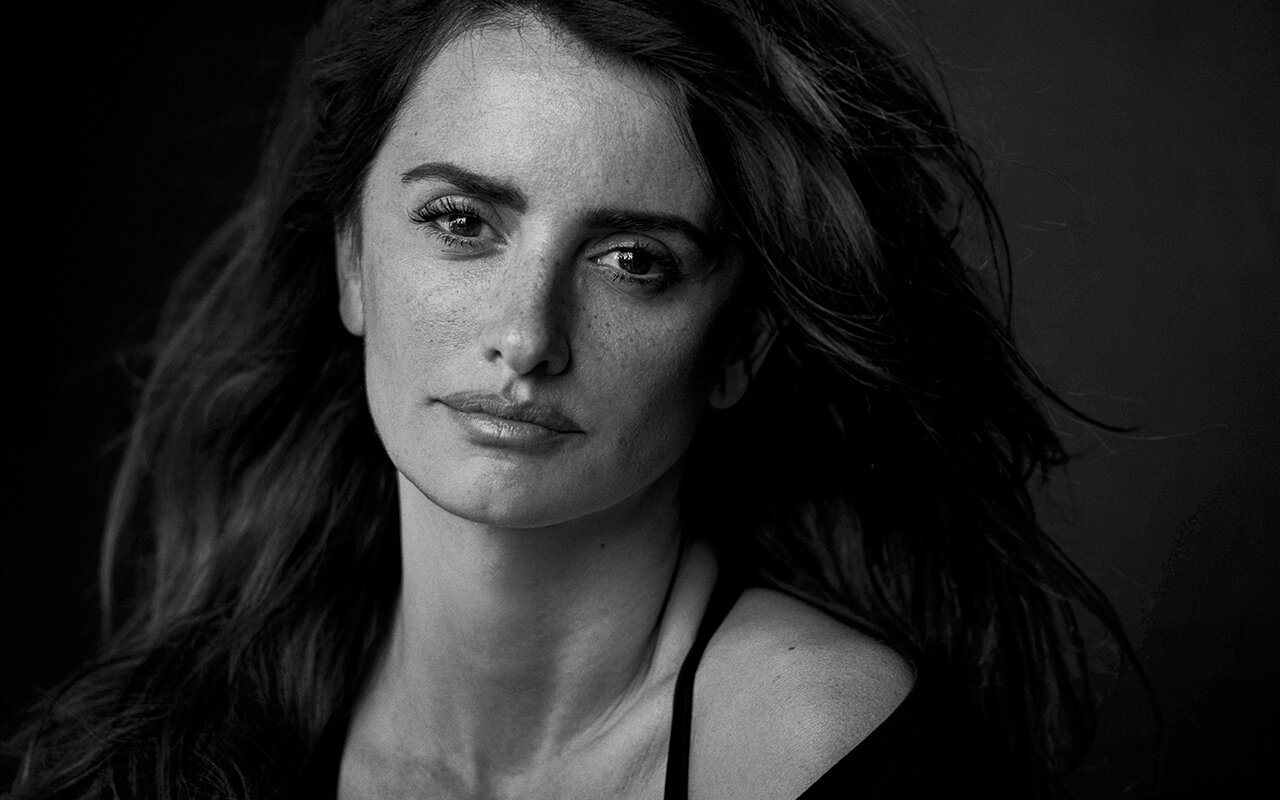
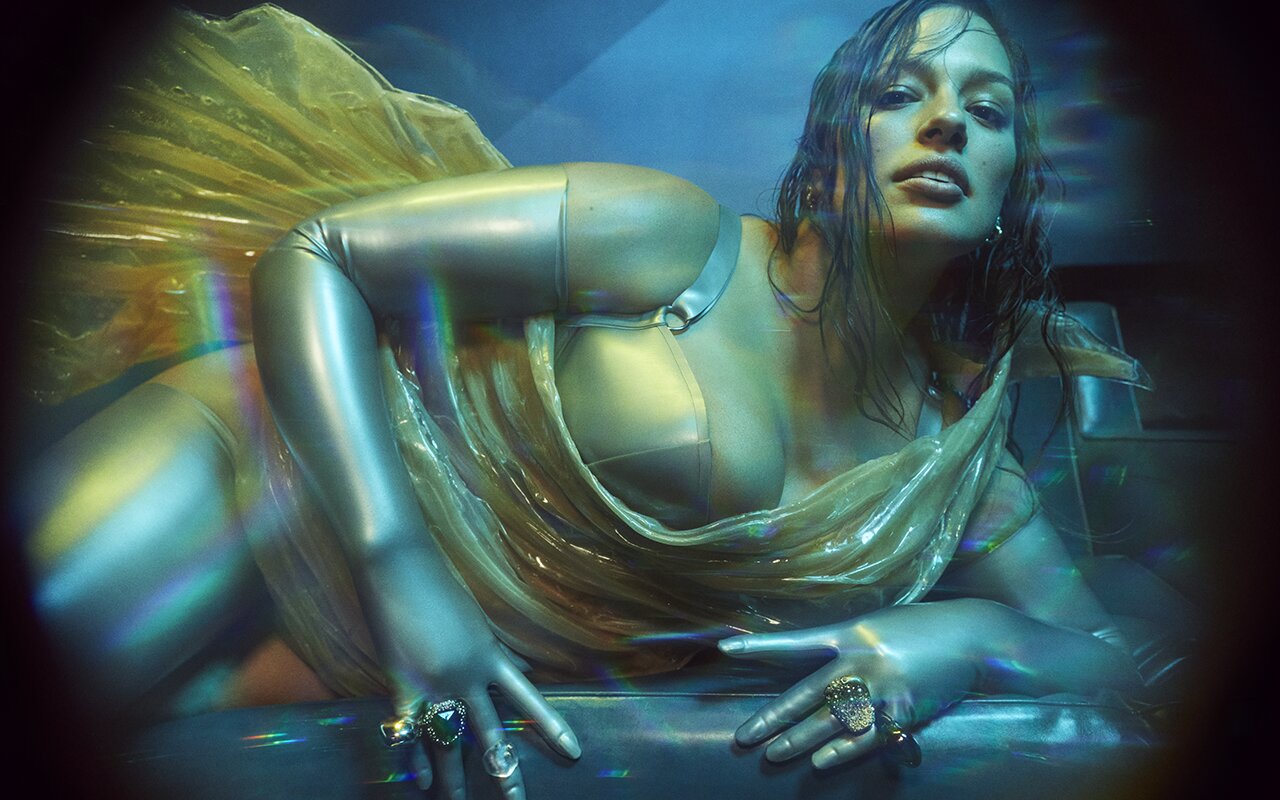
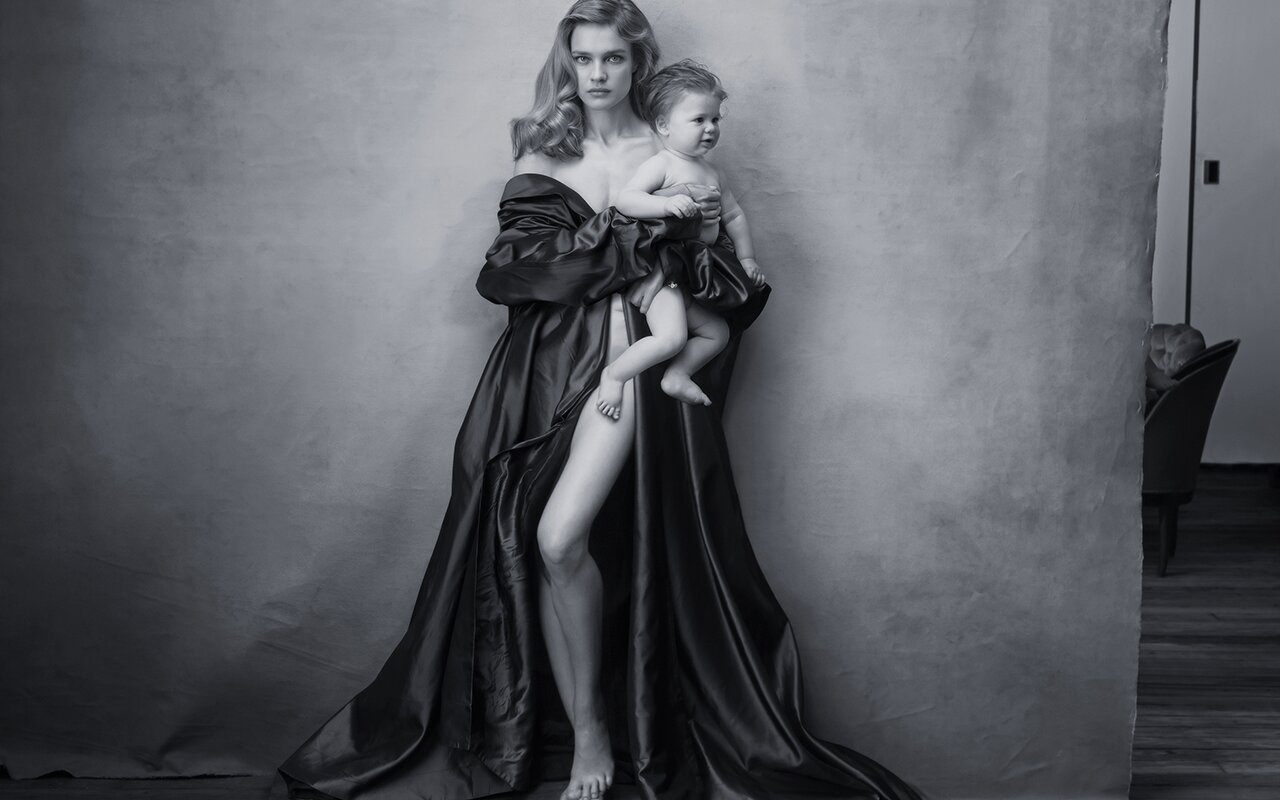
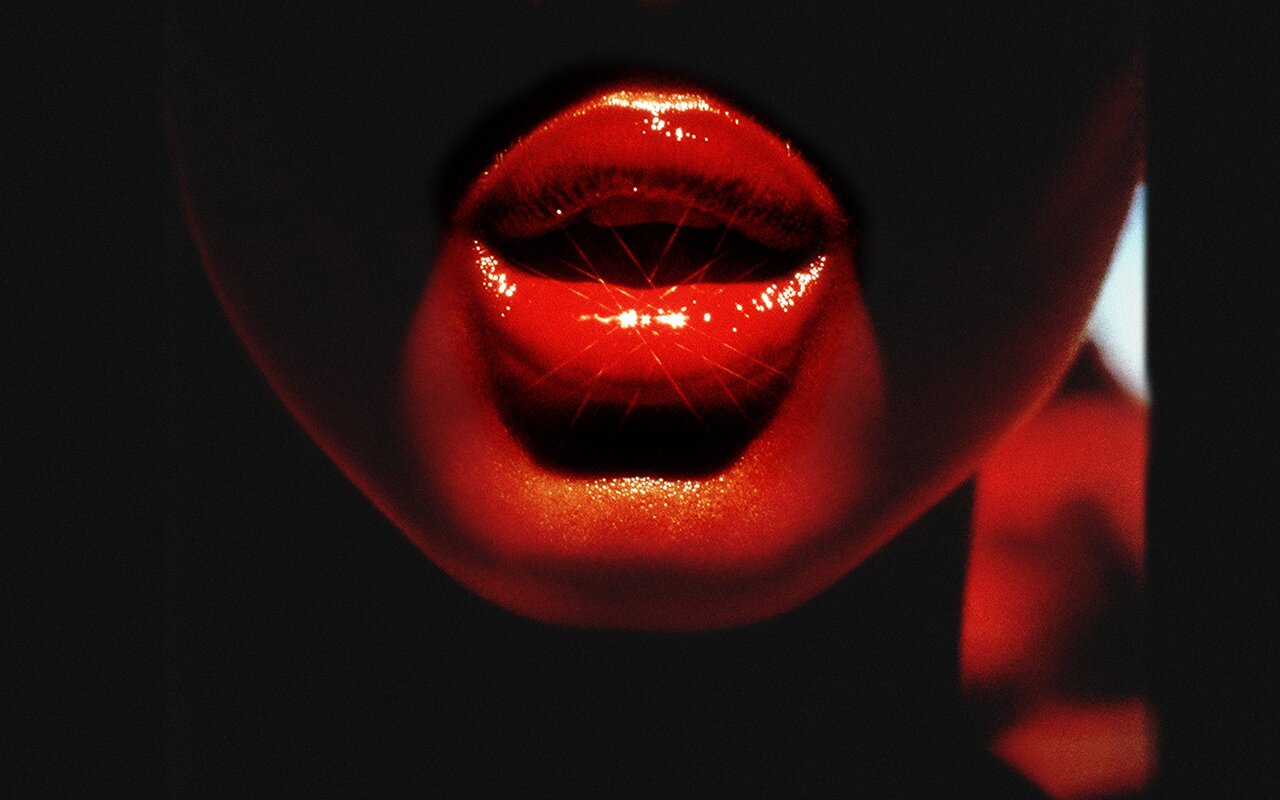
The fashion that reflects the most diverse beauty
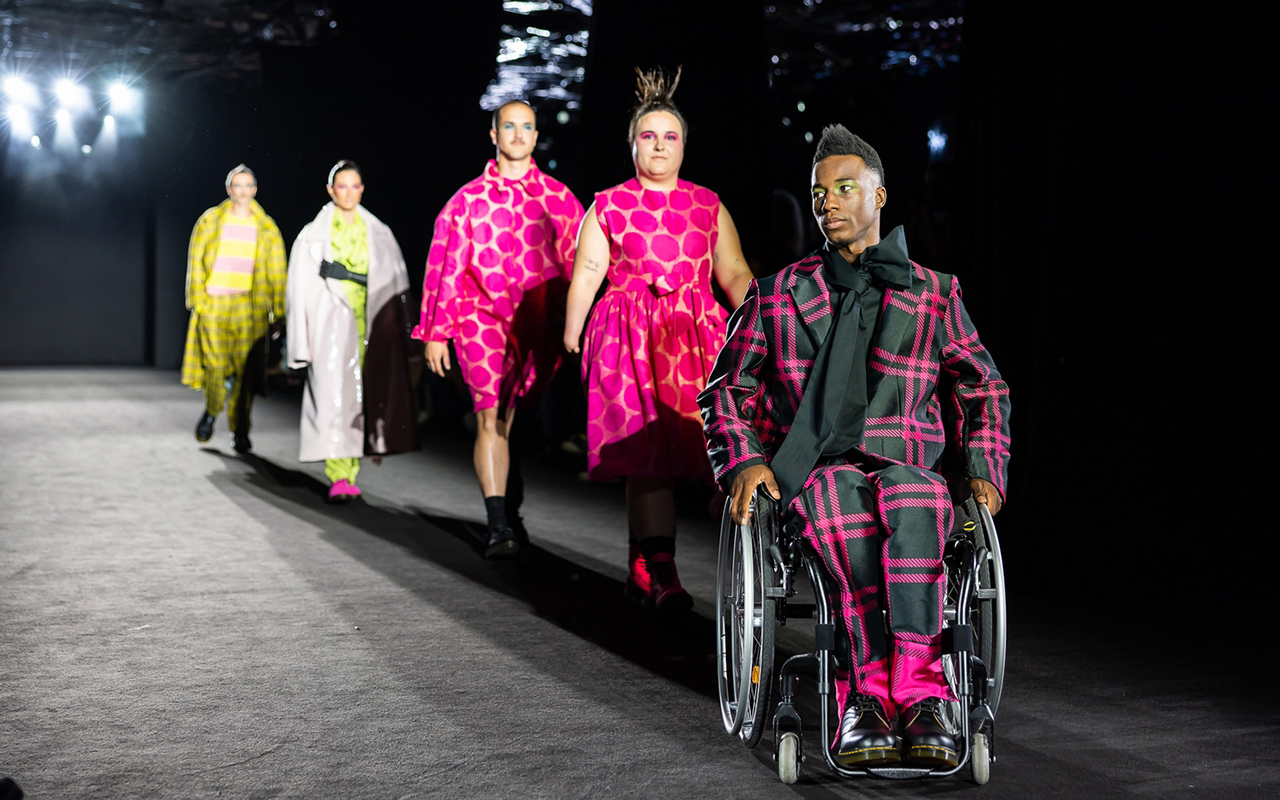
Diversity and inclusion. These are the values that the 080 Barcelona Fashion platform wanted to highlight in their latest edition held at the Sant Pau Art Nouveau Site. And it has done so in an obvious way, reinforcing in the casting of models, a wide variety of bodies that do not understand morphologies, sizes, functionalities, ages or skins that show all their richness of colour and textures. If fashion is a reflection of society, diversity is on the order of the day, it is visibly appreciated on the street and cannot be treated as an exception. For this reason, the Catalan catwalk has also encouraged designers and brands to exercise the power to favour this real change and, at the same time, to take charge of the different challenges of a changing and diverse society.
In this direction, the Catalan catwalk has taken a step further by hosting the first inclusive fashion show in Spain, through the Free Form Style brand. A government awareness initiative on body neutrality and functional diversity that is part of an action plan to combat aesthetic pressure. Founded in 2019 by Marina Vergés and Carolina Asensio, Free Form Style is positioned as a brave brand that is committed to comfort without sacrificing elegance. It is also a pioneer in designing fashion adapted to people with different disabilities with the premise of dignifying all types of bodies because fashion gives that power of dreaming and helps to promote the self-esteem of all groups.
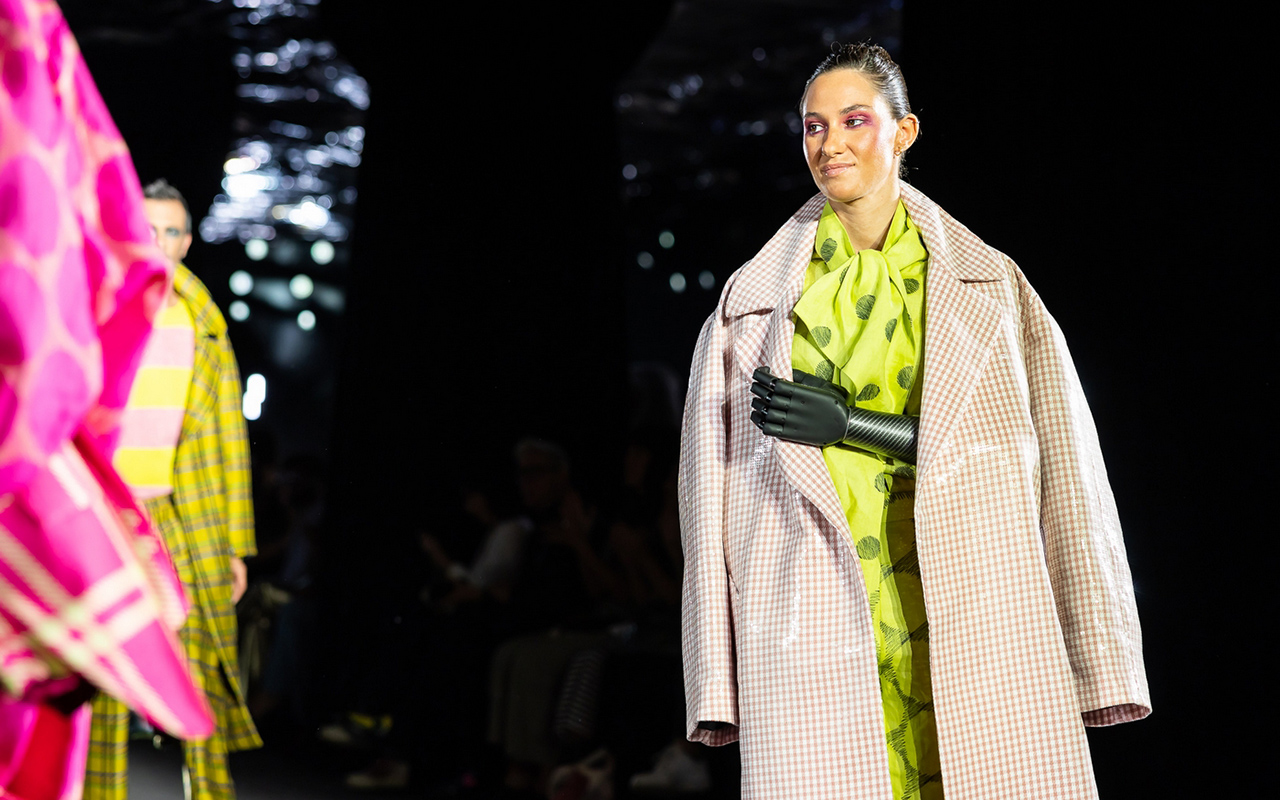
Gratacós collaborated in the inclusive fashion show
In its debut at 080, Free Form Style teamed up with Manuel Bolaño, who was in charge of creating all the designs for the 16 models that walked the runway, including Paralympic athletes Desirée Vila and Sarai Gascón. In this first collection, Bolaño carefully studied the patterns and adapted them to the specific needs of each person, taking into account physical diversity and possible difficulties in dressing: strategically placed side zips, surprising openings to avoid uncomfortable rubbing or small details that facilitate the action of putting on and taking off a piece of clothing.
Gratacós also contributed its grain of sand in this awareness action and gave all the fabrics to the brand and the designer, so that they could devise the collection, giving free rein to creativity to transform the fabrics into surprising designs. On the catwalk there were spectacular Jacquards with checks in vibrant tones, houndstooth motifs, lace, embroidery and transparencies that gave sensuality and also sequins to provide that point of light that adds showiness. All of these fabrics were showcased in the debut collection ‘Just a perfect day’. A proposal that follows the principles of English tailoring and is influenced by the punk and new romantic movements, creating functional and comfortable pieces to dress diversity, but without forgetting fantasy because as Free Form Style defends, “having a disability does not mean not being able to be fashionable”.
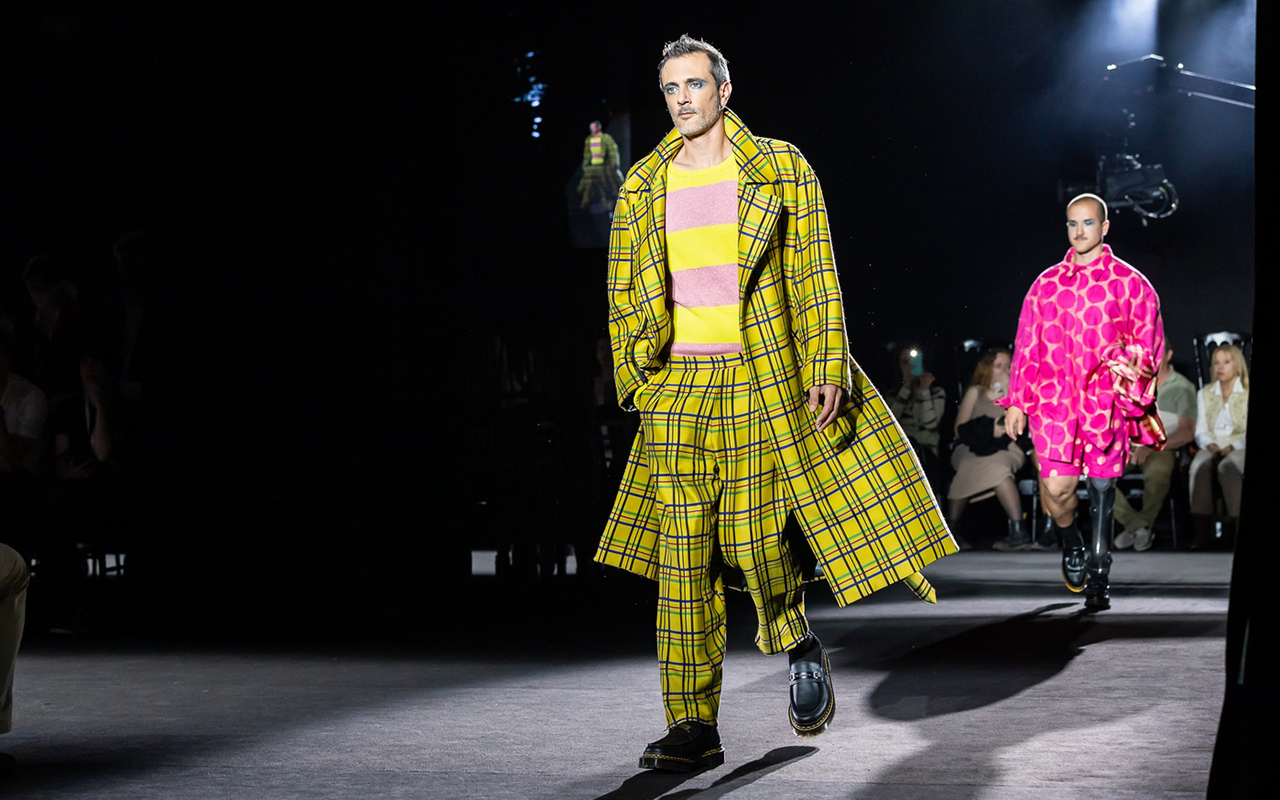
A special showcase
To give this action more visibility and promote the designs exhibited on the 080 catwalk, this month of May Gratacós has dedicated the showcase of our space in Barcelona to inclusive fashion. Thus, our mannequins will be dressed in some models from the debut collection that Manuel Bolaño has made with people with functional diversity in mind. We encourage you to visit our space and take a closer look at these designs that combine comfort with fantasy.
